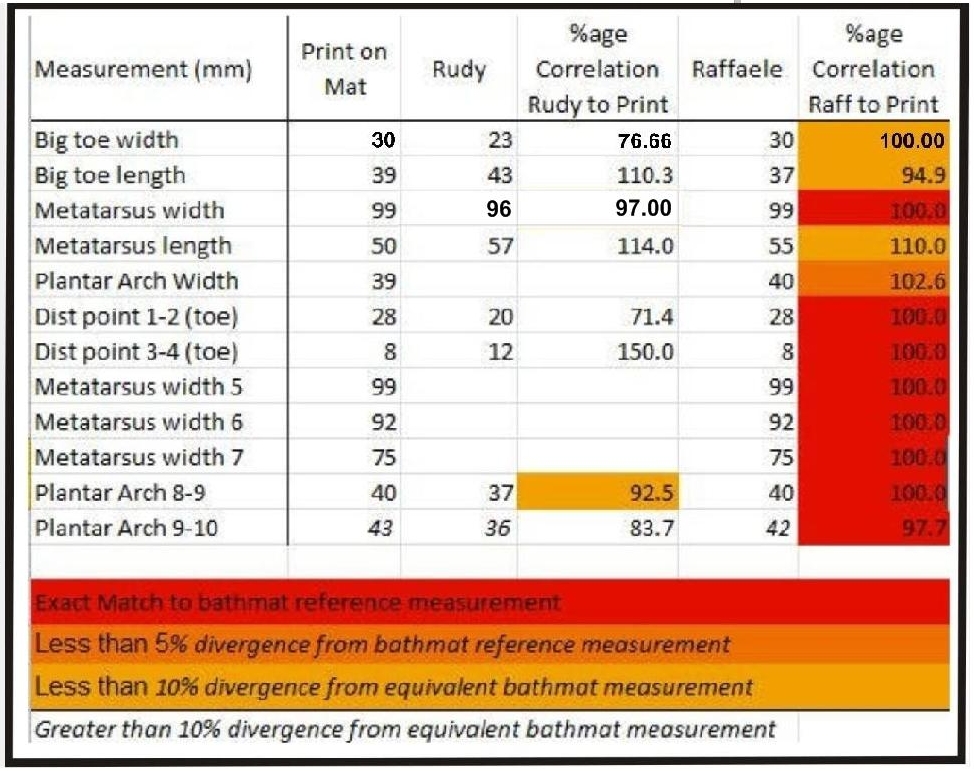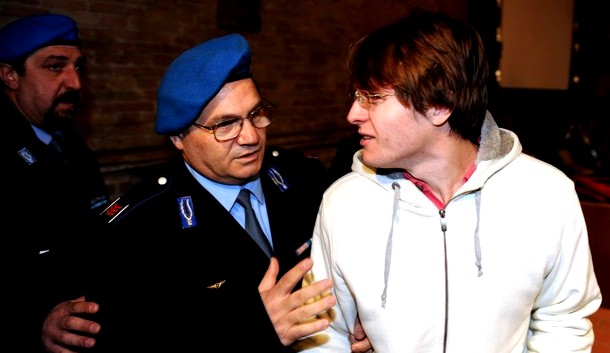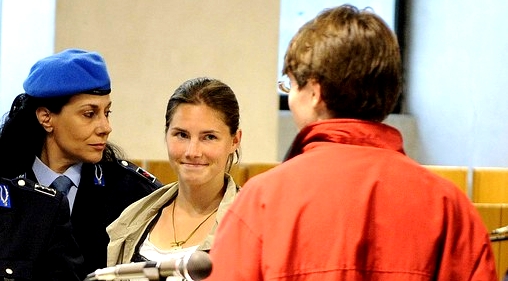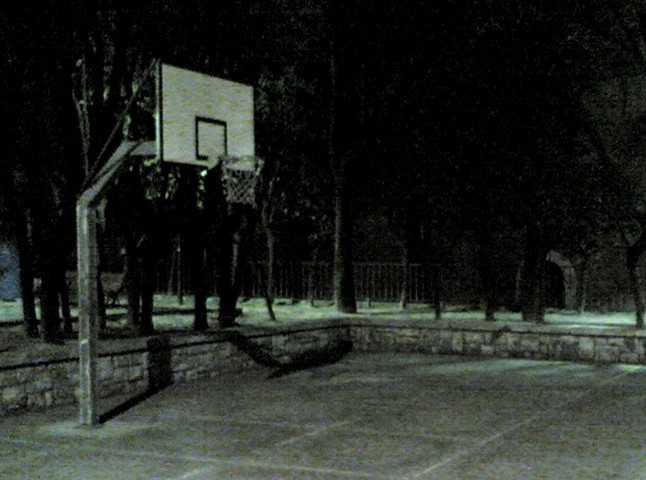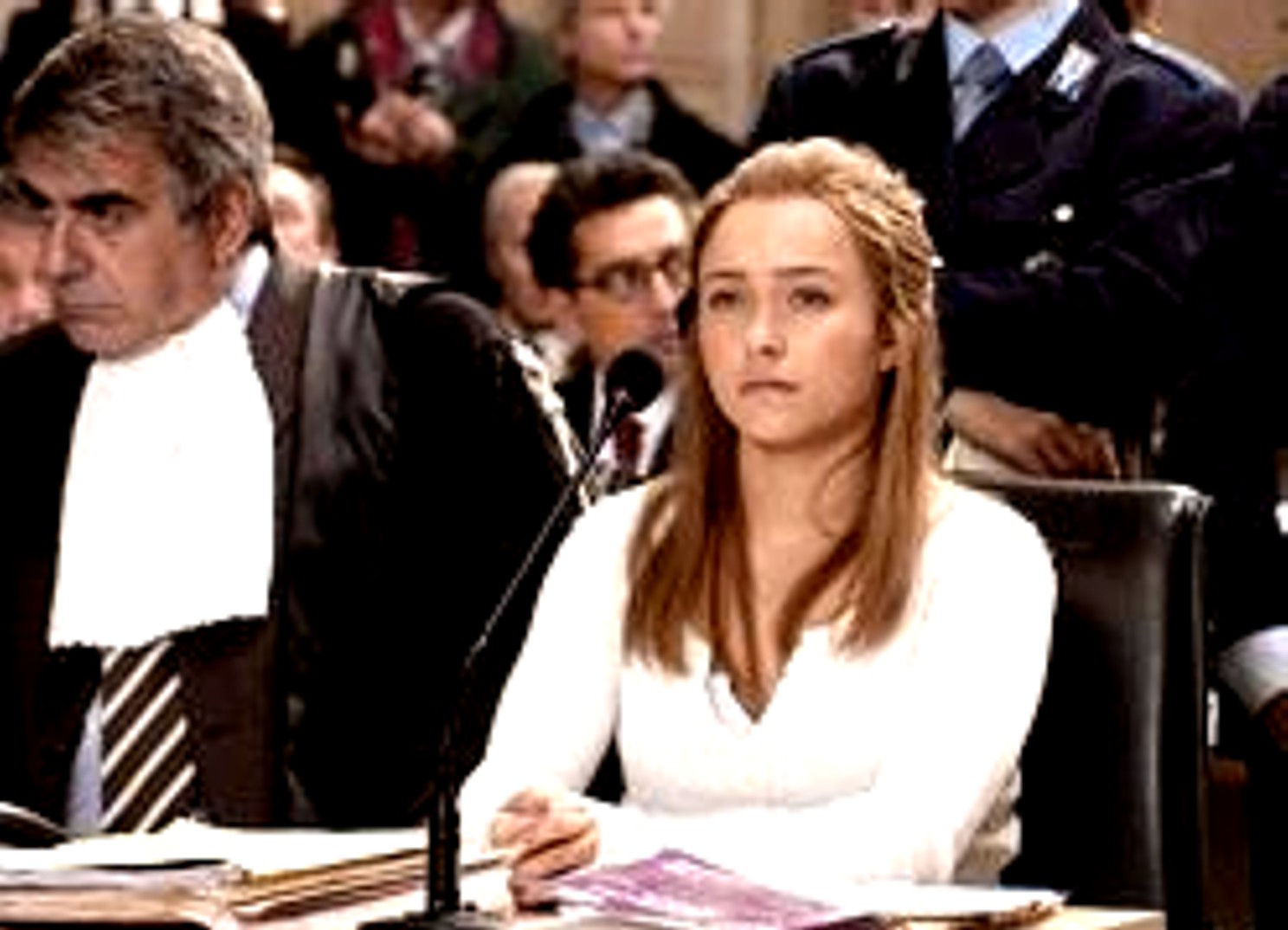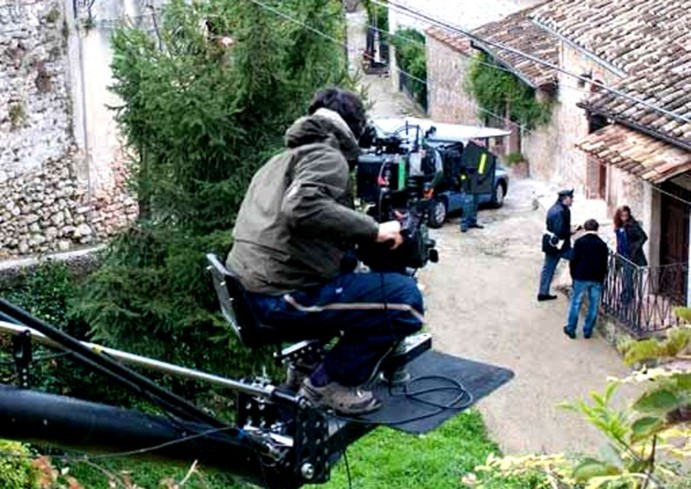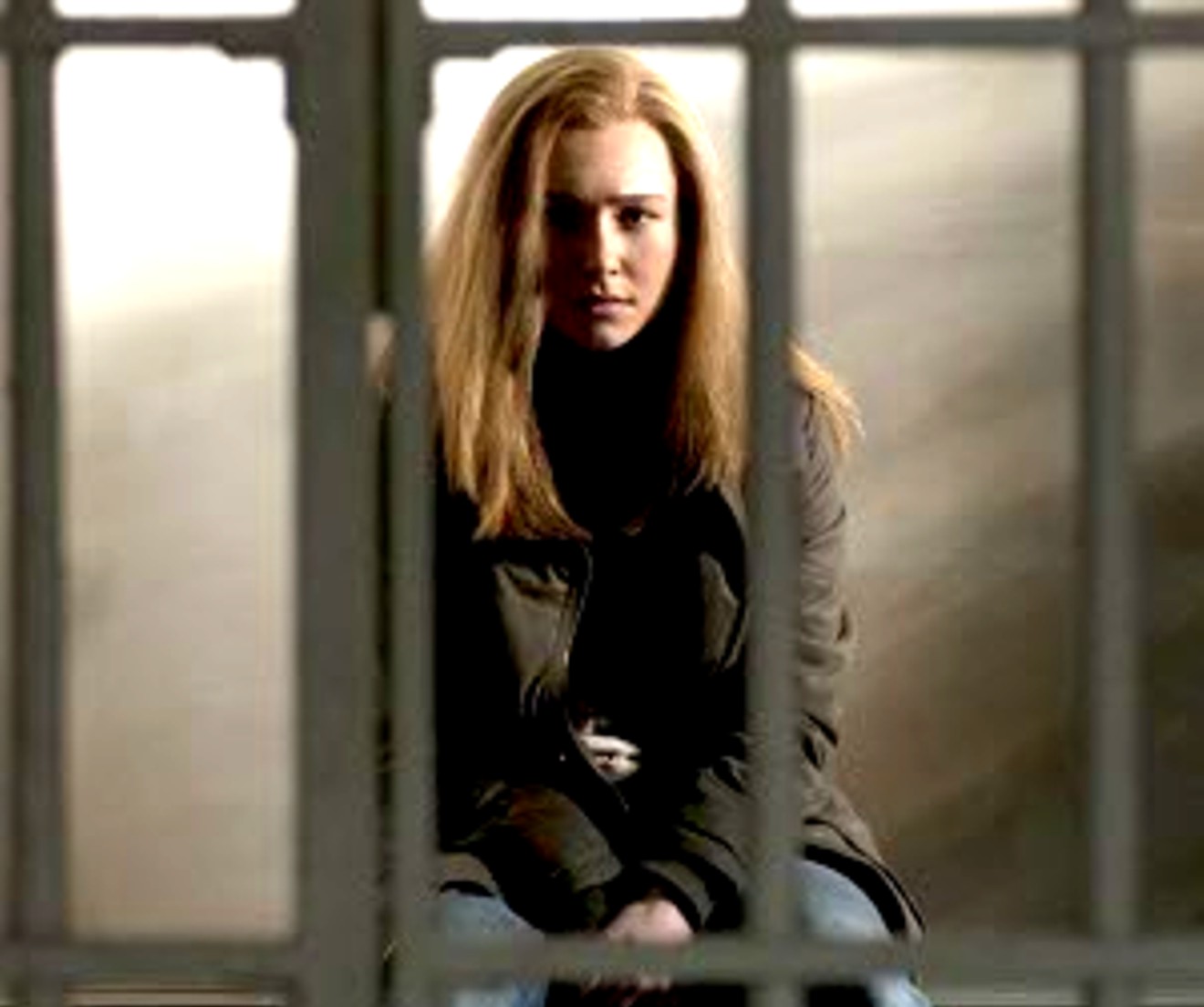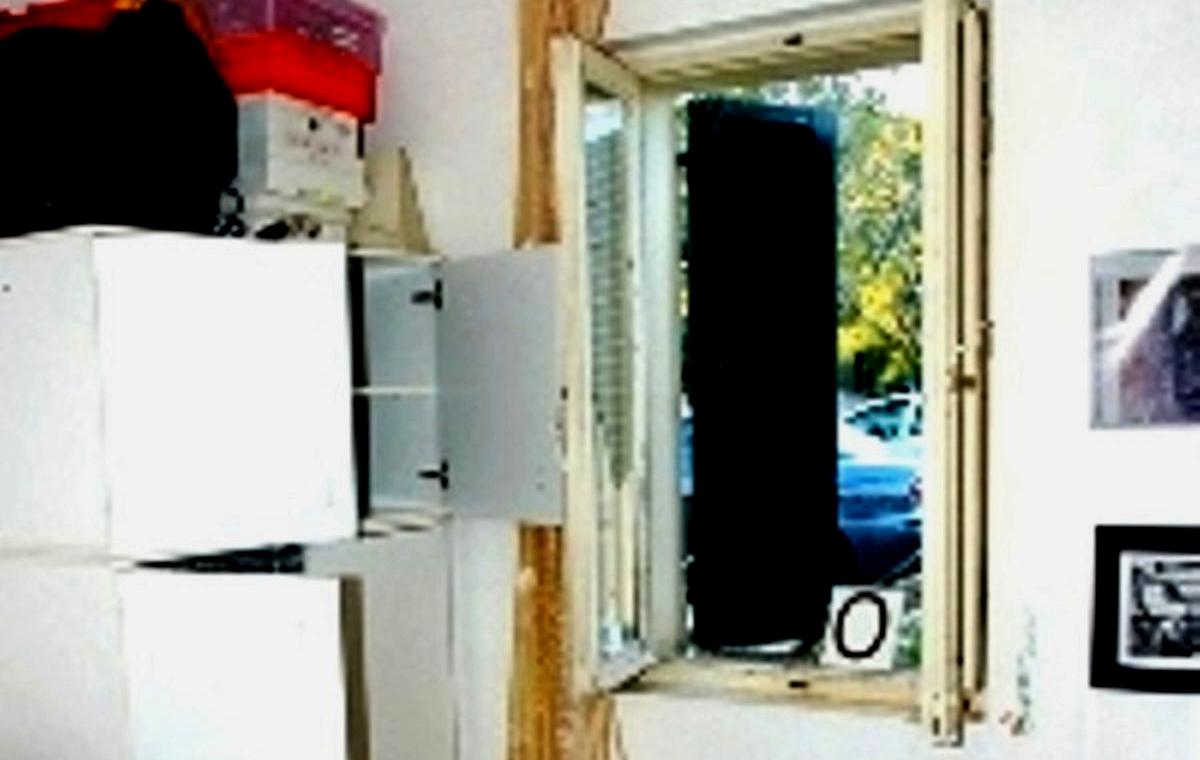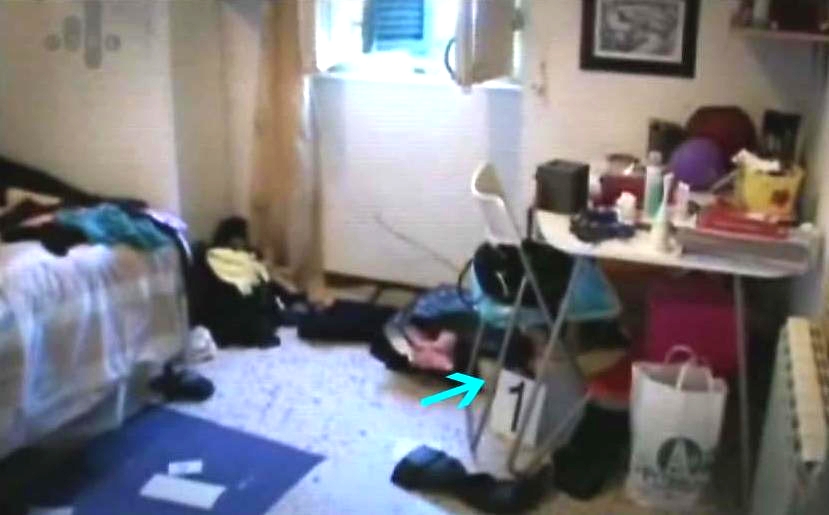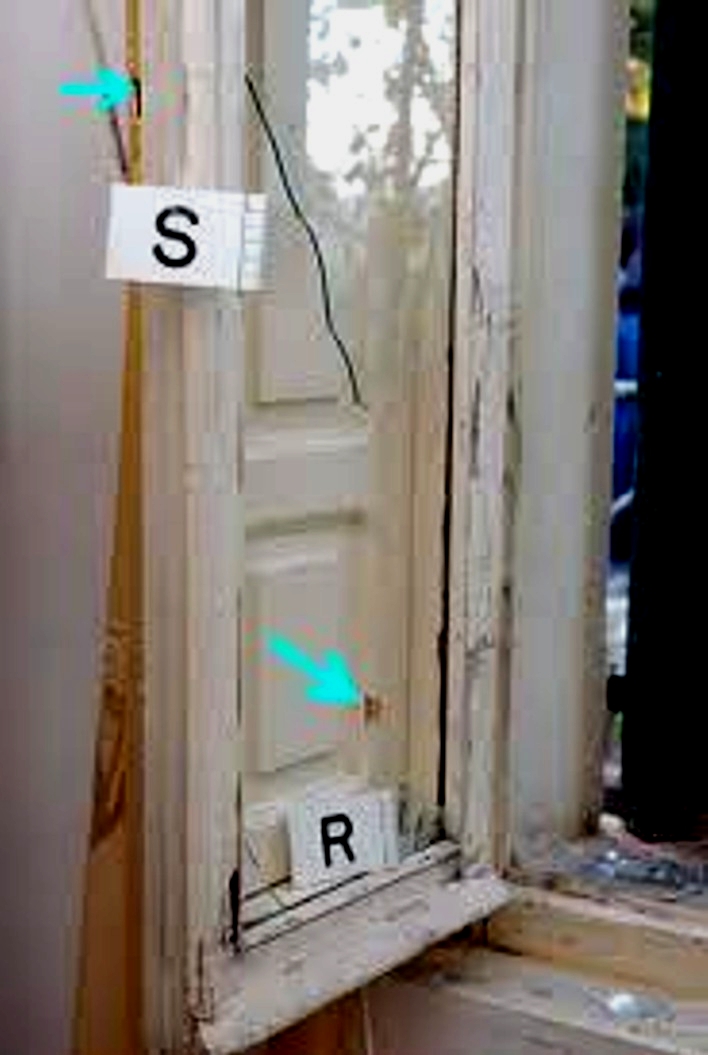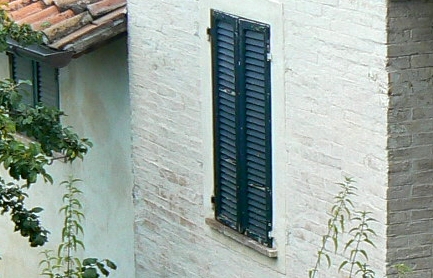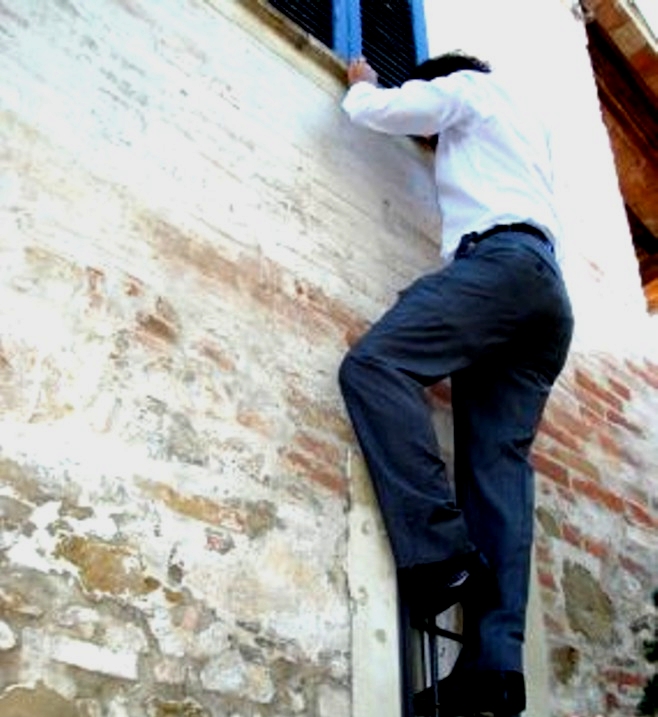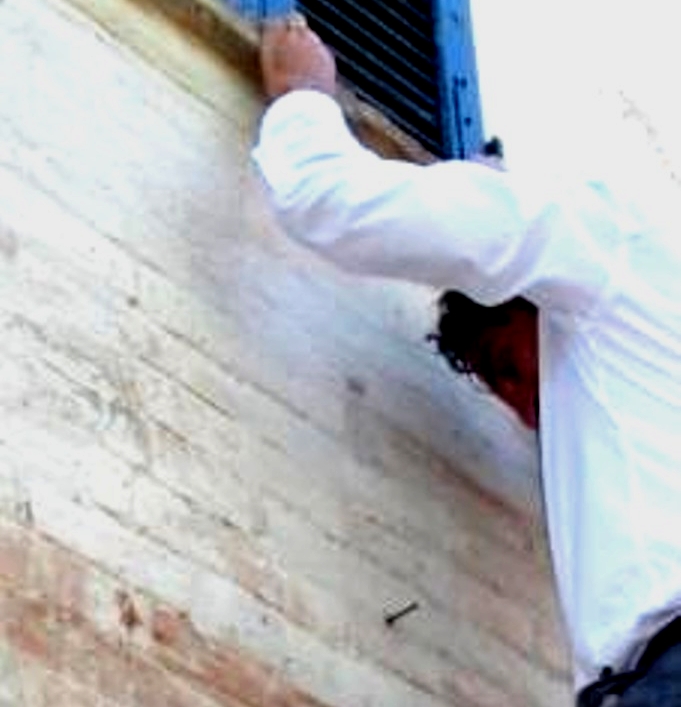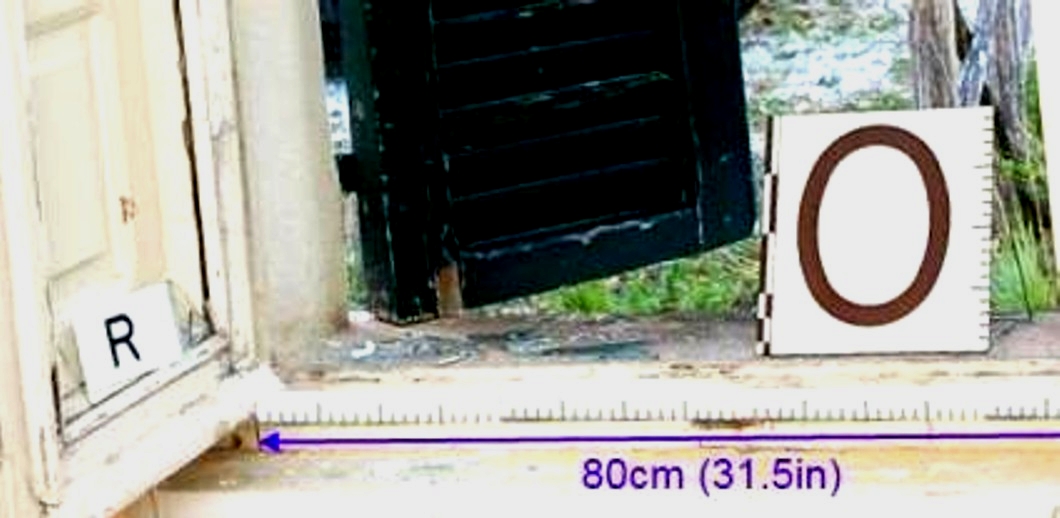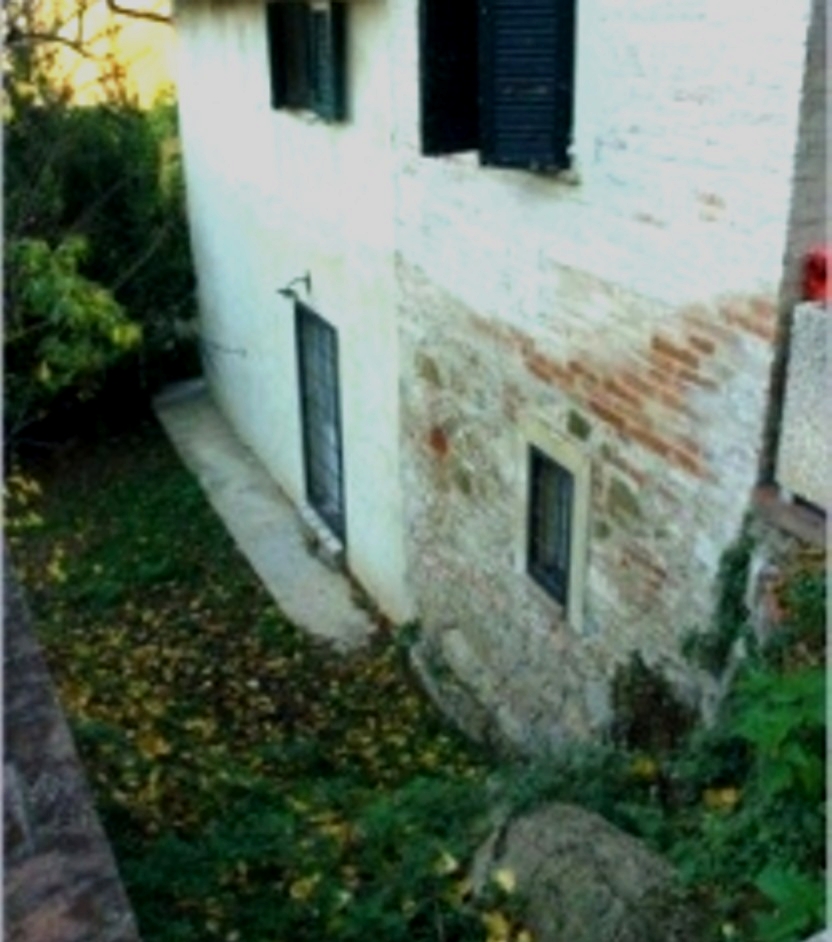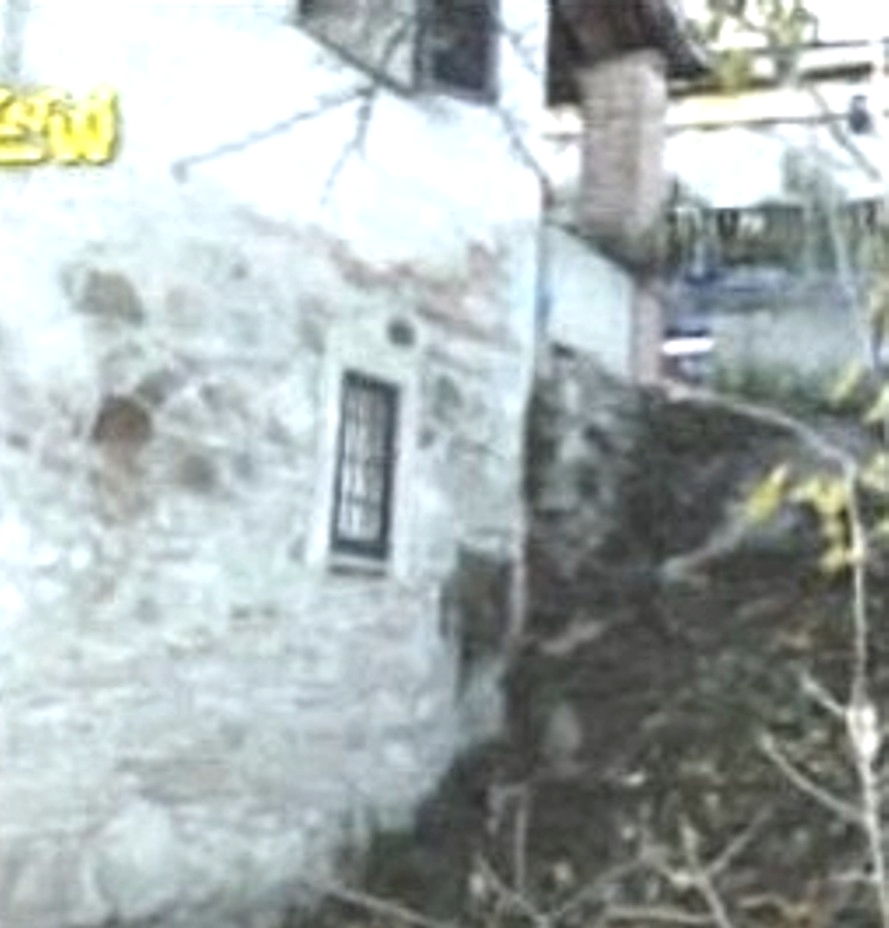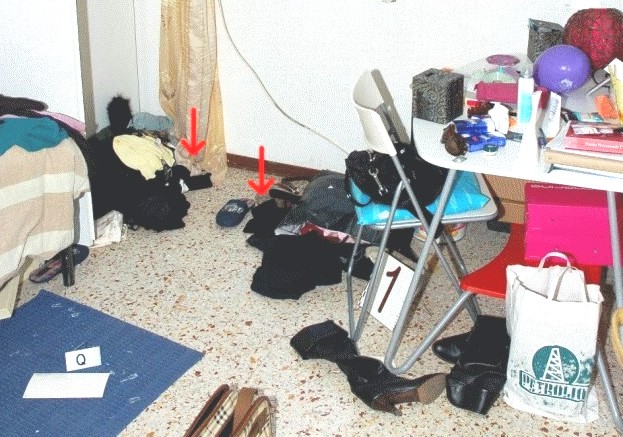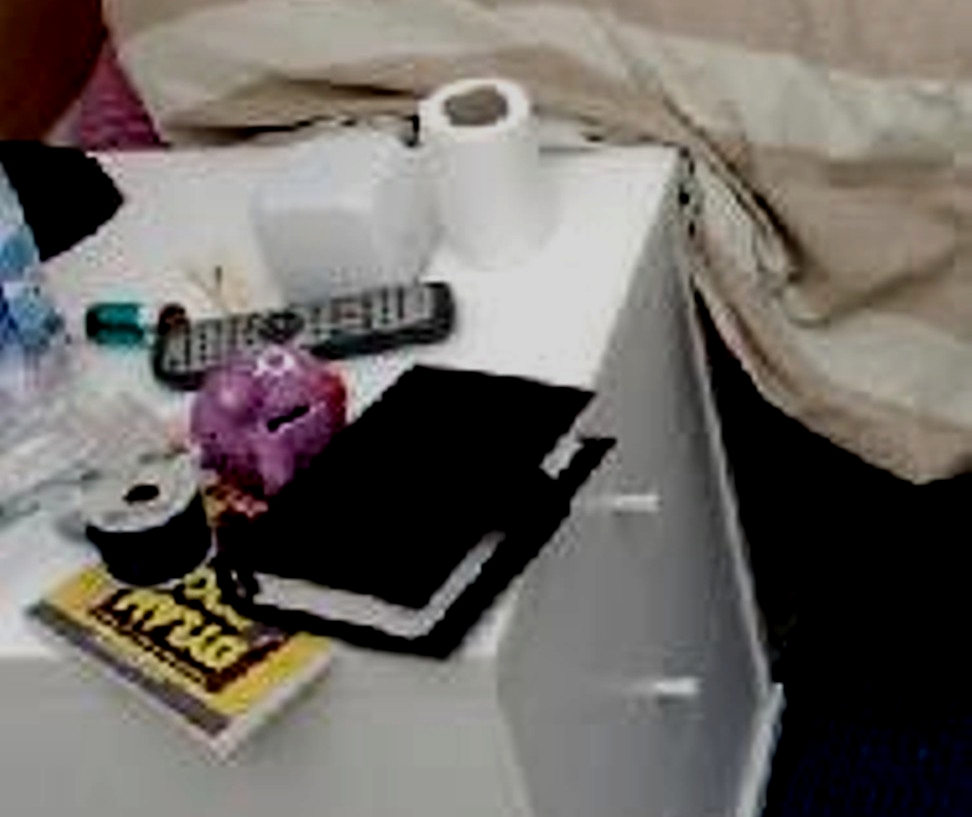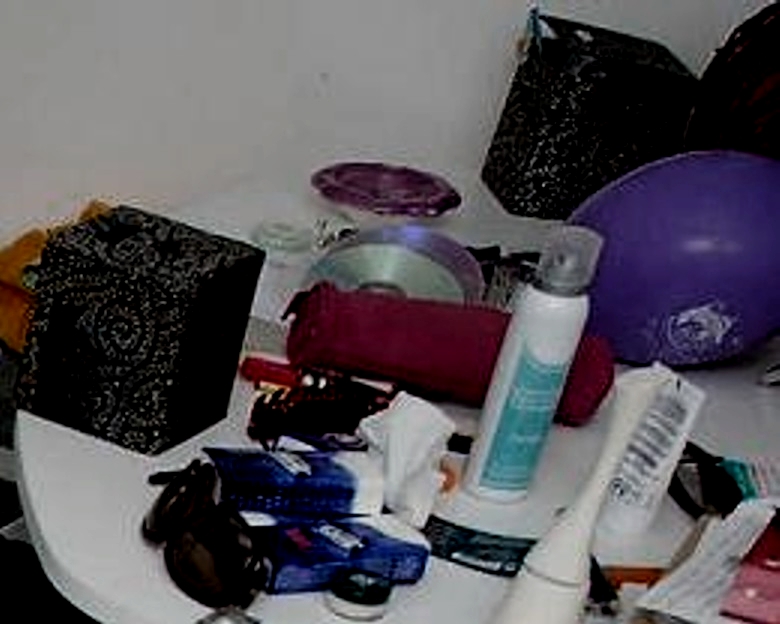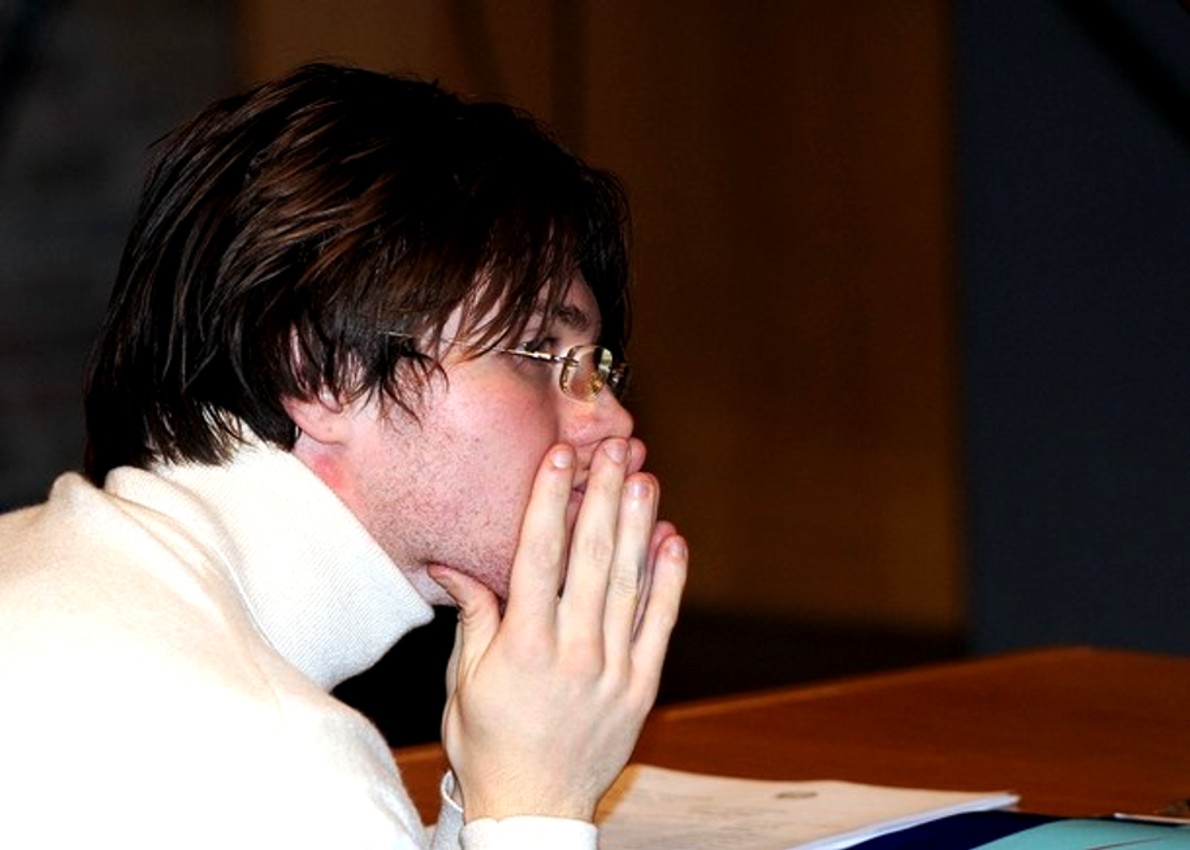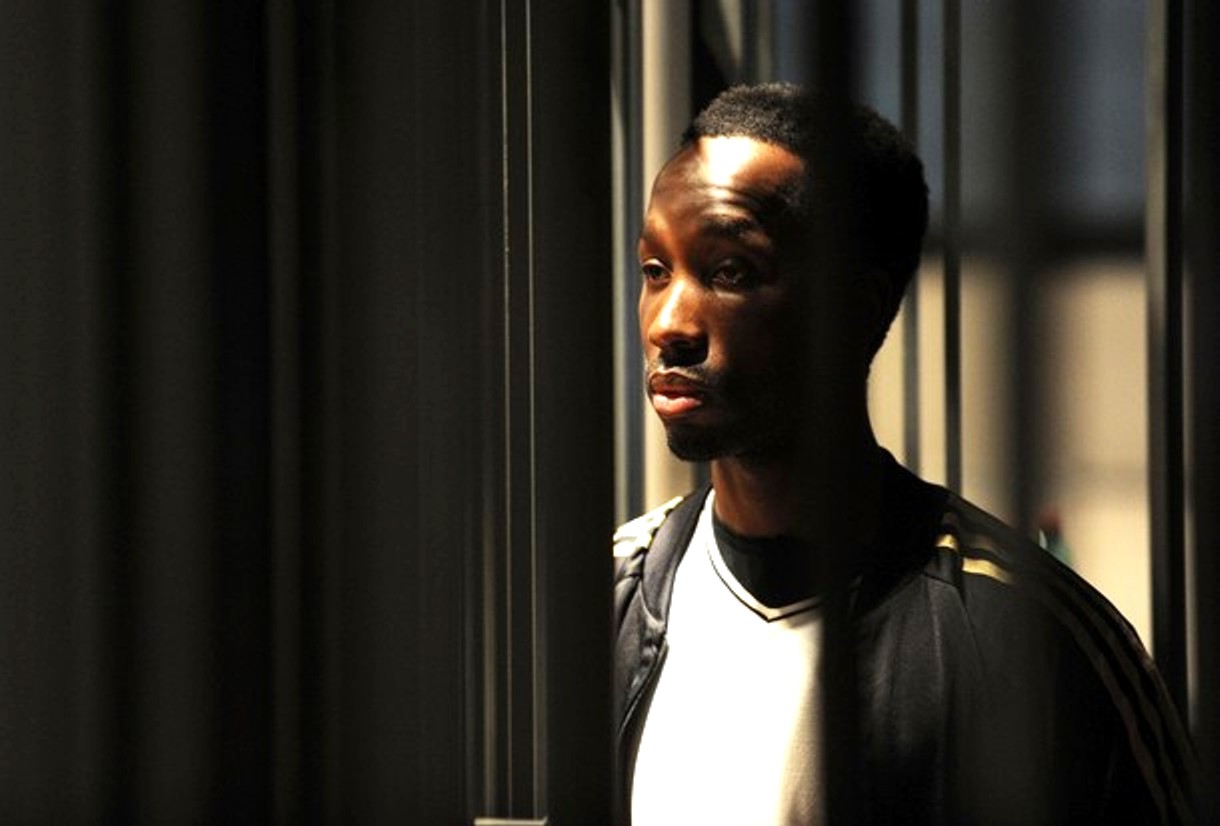
Category: The Massei Report
Monday, April 08, 2013
Experienced Trial Lawyer: There’s Far More Evidence Than UK/US Courts Need For Guilt
Posted by SomeAlibi
The false claim “there is no evidence”
Some amateur supporters of Knox and Sollecito have committed thousands of hours online to try and blur and obfuscate the facts of the case in front of the general public.
Their goal is simple: to create an overwhelming meme that there is “no evidence” against the accused, and thereby try to create a groundswell of support. Curt Knox and Edda Mellas and Ted Simon have all made this “no evidence” claim many times.
At least some some of the media have eagerly swallowed it.
The amateur PR flunkies make up myriad alternate versions of what created single points of evidence, often xenophobic scare stories designed to trigger emotional reactions, which they hope will be repeated often enough to become accepted as “the truth”.
And where things get really tricky, another time honored tactic is to go on at great length about irrelevant details, essentially to filibuster, in the hope that general observers will lose patience with trying to work it all out.
But time and again we have shown there is actually a great deal of evidence.
Evidence is the raw stuff of criminal cases. Let me speak here as a lawyer. Do you know how many evidence points are required to prove Guilt? One evidence point if it is definitive.
A definitive evidence point
If you’re new to this case or undecided, what is an easy example of ONE definitive evidence item that might stand alone? Might quickly, simply, and overwhelmingly convince you to invest more time into understanding the real evidence, not that distorted by the PR campaign?
In fact we have quite a choice. See the footprint which was second on that list.
Now see the table above. I recommend the use of this table of measurement to avoid the lengthy back and forward of narrative argument which so lends itself to obscuring the truth. I would like to present you with this single table of measurements to give you pause to question whether this line that there is “no evidence” is really true or whether it might be a crafted deception.
I present here a summarized view of critical evidence which suggests with devastating clarity that Raffaele Sollecito was present the night of the murder of Meredith Kercher. No lengthy text, no alternate versions, just measurements.
This FIRMLY places Sollecito in the very room where Meredith was attacked and killed.
In the small bathroom right next to Meredith’s bedroom was a bathmat. On it was found a bloody naked right footprint of someone walking straight towards the shower in the bathroom. The blood is that of Meredith.
The footprint is not Amanda Knox’s - it is too big - but we can compare it to the prints taken of Rudy Guede and Raffaele Sollecito.
In Judge Massei’s report the multiple measurements were detailed in the narrative over many sentences and, in that form, their immediate cumulative impact is less obvious. It is only by tabulating them, that we are forcefully hit by not one but two clear impressions:
The measurements are extremely highly correlated to the right foot of Raffaele Sollecito in twelve separate individual measurements. In themselves they would be enough for a verdict of guilt in all but a few court cases.
But they also show a manifest LACK of correlation to the right foot of Rudy Guede, the only other male in that cottage on the night. Have a look for yourself.
If you were the prosecution, or indeed the jury, and you saw these measurements of Raffaele’s foot versus the print, what would you think? Answer the question for yourself based on the evidence admitted to court.
Then, if you compare further, exactly how plausible do you find it that the measurements of the bloody imprint are Rudy Guede’s instead?
Not only are some of the individual measurements of Rudy’s imprint as much as 30% too small, but the relative proportions of length and breadth measurements are entirely wrong as well, both undershooting and overshooting by a large margin (70% to 150%).
Conclusions that must follow
Presented with those numbers, would you consider those measurements of Rudy Guede’s right foot to show any credible correlation to those of the footprint on the mat?
Supporters of the two have tried frantically to create smoke screen around this - the wrong technique was used they say (ruled not so by the court) / they are the wrong measurements (all 32 of them? that Raffaele’s are matching exactly or within a millimetre but Rudy’s are out by as much as -30% to +50%...?).
The severity of the impact on the defence is such that there was even a distorted photoshopped version circulated by online supporters of Raffaele and Amanda until they were caught out early on in coverage. But it is hopeless, because these are pure measurement taken against a scale that was presented in court and the data sits before you.
Have a look at the measurements and understand this was evidence presented in court. Whose foot do you think was in that bathroom that night? Rudy Guede? Or was it Raffaele Sollecito on twelve counts of measurement?
And if you find for the latter, you must consider very seriously what that tells you both about the idea there is “no evidence” in this case and who was in the cottage that night…
Tuesday, September 11, 2012
Raffaele Sollecito’s DNA In Meredith’s Room Could Be Definitive Proof Of Guilt For New Appeal Jury
Posted by James Raper
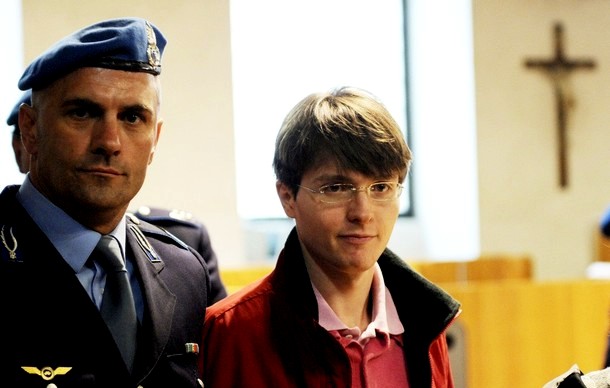
Have you followed our series on the hapless independent DNA consultants Conti and Vecchiotti? And our series on the hapless appeal judges Hellmann and Zanetti?
And our series on their formidable nemesis, Umbria’s Chief Prosecutor, Dr Galati? Who may very well convince the Supreme Court to throw out all of their work?
This post explains why their work probably deserves to be thrown out as it applies to Sollecito’s DNA in Meredith’s room, which still lacks an alternative non-damning explanation for it being there, and which could see him back serving his term in Capanne or Terni Prison before too long.
I want to start this analysis with the following verbatim quote taken from John Follain’s Death In Perugia.
“Comodi asked Vecchiotti about the alleged contamination of the bra clasp: “Is it possible for [Raffaele’s] DNA to end up only on the bra clasp?”
“Possible”, Vecchiotti said.
Comodi insisted: “Probable?”
“Probable”, Vecchiotti retorted.
Anyone who has read the Conti-Vecchiotti Report will be amazed by Vecchiotti’s above reply under cross-examination by Prosecutor Comodi. This for the simple reason that the said report did not at all evaluate the “probability” of any contamination of the bra clasp. It merely did not rule out contamination.
The Conti-Vecchiotti report with regard to the bra clasp: “It cannot be ruled out that the results obtained derive from environmental contamination and/or contamination in some phase of the collection and/or handling of the exhibit.”
On any level of understanding, if one can not rule something out then that makes it possible. But it certainly does not make it probable.
Worse was to come, with the conclusion of Hellmann-Zanetti, that contamination was probable. This though was not so surprising in as much as Hellmann-Zanetti had already indicated in their reasoning underlying the need for an independent report that they would accept the independent experts’ conclusions.
Which they did, apparently accepting Vecchiotti’s above statement on oath as definitive and which, as we can see, they appear to subsequently improve on, since the circumstances referred to below were not mentioned in the Conti-Vecchiotti Report. From Hellmann-Zanetti:
In the opinion of this Court contamination did not occur during the successive phases of treatment of the exhibit in the laboratory of the Scientific Police, but even before it’s collection by the Scientific Police.
Note that (1) the suggestion is that contamination occurred when there was no video recording (thus permitting free speculation), (2) the word “probably” is omitted here seemingly making it a definite occurrence, and (3) “even before” does not exclude contamination when the Scientific Police were there, but the circumstances described below make it, in the opinion of Hellmann-Zanetti, even more probable, it seems. Again from Hellmann-Zanetti:
..it is certain that between the first search by the scientific police, directly after the discovery of the crime, and the second search by the police, on the 18th December, the house at villa della Pergola was the object of several other searches directed towards seeking other possible elements useful for the investigation, during which the house was turned topsy-turvy, as is clearly documented by the photographs projected by the defence of the accused, but actually made by the Scientific Police. And, understandably these searches were made without the precautions that accompany the investigations of the Scientific Police, in the conviction that at that point the exhibits that needed to undergo scientific analysis had already been collected. In this context it is probable that the DNA hypothetically belonging to Raffaele Sollecito may have been transported by others into the room and precisely onto the bra clasp”¦”¦”¦..the fact that [this] is not an unusual occurrence is proven by studies cited by the expert team and also by the defence consultants”¦”¦..
So Hellmann-Zanetti are talking about the ordinary police investigators being primarily responsible.
As the Vecchiotti quote at the beginning of this post is not put in any context, it is impossible for me to know whether she was referring to the Scientific Police as seen in their videos or whether she was alluding to other recorded searches, say, by the ordinary police, but which were not on video.
What we know of the police searches is as follows. From the Massei trial sentencing report:
While forensic activity was still in progress (Note: it having been going on since the 2nd) “the house was accessed on November 4th 2007 involving, accompanied by staff from the Perugia Police Headquarters, the three occupants and housemates of the victim.
The days of November 6 and 7 were taken up by the search activity of personnel from the police headquarters of Perugia”¦.on November 6” (Note: the day after conclusion of the Scientific Police activity) “no-one entered Meredith’s room other than the three performing the search. On November 7 there was another entry into the house “for the problem of the washing machine, to collect the clothes; but I (Napoleoni) know that they did not go into the other rooms…..
They wore gloves and shoe covers….
Massei also records that Profazio stated that whilst he was aware from Stefanoni that the bra clasp had not been collected, nevertheless he had not seen it on the 6th and 7th.
As we know, the Scientific Police returned to the house on the 18th December specifically for the purpose of collecting the bra clasp (the first thing they did) and using luminol, and in addition to this being on video the defence lawyers were watching the live recording outside. It was observed by the defence lawyers at that stage that the mattress was in the living room and that articles had been moved around (topsy-turvy) in her bedroom.
From the above it might be reasonable to conclude that it was not only the Scientific Police who took the photographs but that it was predominantly they who had already moved items around and taking - it not having been demonstrated to the contrary (because not on video) - such precautions appropriate to their field of expertise (or at least such as may be determined from the videos).
However the point is, of course, what entitles Vecchiotti and Hellmann-Zanetti to talk about probable contamination at all?
Incidentally, pause here to notice that Hellmann-Zanetti give no credence to environmental contamination, in the sense of DNA floating around on specks of dust, by virtue of not mentioning this at all.
It would seem that the notion that a speck of dust, with Sollecito’s DNA attached, floated into the room and landed bang on a tiny hook, somehow adhering to it, is improbable to even them. It is transfer by manipulation ( tertiary transfer, about which more later) - basically that someone must have stepped on or touched the bra clasp or hook - about which they are talking and as a result of which they deem contamination to have probably occurred.
Without that probability - that is if it remained only a possibility - then the case for direct transfer (directly from the owner of the DNA to an object), rather than tertiary transfer (where the DNA is collected after direct transfer and transferred to another object), would not be undermined as the more probable scenario. This is because, in this context, no-one can rule out possibility, ” possibility” being firmly rooted in the abstract.
What Hellmann-Zanetti think entitles them to talk about the probability of contamination are, and as it transpires only are, the precautions which they say were not followed in collecting and handling the exhibit and for which they suppose the non-scientific police were most likely responsible.
Compliance with these, they say, “guarantees” the reliability of the result. They refer to the Do’s and Do Not’s of successful crime scene management as listed by Conti-Vecchiotti and taken from guidelines from the Louisiana State Crime Police Laboratory, from the U.S Department of Justice, and more relevantly from Evidence Manuals from the New Jersey State Police, Missouri State Highway Patrol and North Carolina State Bureau of Investigation.
There is a predominance of American references but they do also refer to the Good Practice Manual for Crime Scene Management promoted by ENFSI (European Network of Forensic Science Institutes). From Hellmann-Zanetti -
Regarding above all the identification of a genetic profile in an exhibit, it is important that the entire procedure be followed with complete observance of the rules dictated by the scientific community, which are not, to be sure, juridical rules (it is not a law of the State, as Dr. Stefanoni observed), but which do represent a guarantee of the reliability of the result. And since these rules also contain precautions necessary in order to avoid possible contamination, one can understand that the respect of these precautions cannot simply be assumed, but must be proven by anyone who bases his accusations on this result.
Rules and guidelines are not quite the same thing, still less are there standardised guidelines dictated by the scientific community, but let’s not be pernickety. What compliance with the guidelines does, of course, is reduce the risk (the “possibility” and yes, if there are elements supporting it, “the probability”) of contamination, not guarantee that there is not contamination. As any expert in the field will concede, contamination is always possible.
Conti-Vecchiotti listed, apparently, some 54 examples of breach of the aforesaid guidelines. Significant among these (because we know of them and the most was made of them) are the following listed by Follain in his book Death In Perugia-
1. The team failed to put on new gloves after bagging each sample ( probably, as with 2 below, accounting for the great majority of the examples, and Stefanoni admitted this did not happen every time).
2. Items were handled by more than one person without changing gloves (again, as above, admitted).
3. There was a smudge on one of the fingertips of one of the gloves which touched the clasp, so the glove was dirty.
4. The officer who picked up Meredith’s bra clasp passed it to a colleague before placing it back on the floor and then bagging it.
5. Stefanoni’s gloves were smudged with blood and split over her left index when she picked up a sample ( this need not detain us since it is an irrelevant and highly speculative and prejudicial observation, if not entirely erroneous, based on what can be seen from the video).
6. The officer filming the police video walked in and out of Meredith’s room without changing his shoe covers.
7. No security corridor was created for internal access with anti - contamination criteria between the various environments.
8. The initial position of discovery on the floor of the clasp was not the same after 46 days.
The idea of a security corridor which, given the confines of the cottage, and particularly the access to Meredith’s room, would mean, for instance, placing planks on the floor, is a good one, and obviously not followed in this instance though not actually a specific recommendation (though it can be inferred) in any of the guidelines referred to by Conti-Vecchiotti. It would have reduced the risk of carrying DNA into Meredith’s room on the soles of shoe covers.
The alleged breaches were not, of course, outlined in the Conti-Vecchiotti report. They were only mentioned in oral evidence accompanying the showing of the crime scene video in court.
Hellmann-Zanetti, in their report, mention two specific cases only, 3 and 8 above. In respect of “the smudge” they acknowledge, interestingly, that there is an unresolved issue of interpretation as to whether this is a shadow or prior staining! But why even posit a prior staining when it is obvious that the operative had to finger the fabric of the clasp (which was “dirty”) in order to pick the clasp up and show it to the camera? What was the dirt and what was the meaning of this in the context of a transfer of Sollecito’s DNA to the hook? They neither discuss not evaluate. They simply accept Conti-Vecchiotti’s observations as being pertinent and damning without question.
In contrast to Hellmann-Zanetti Massei does discuss and evaluate the probability and the logistics of contamination, with regard to the bra clasp. In fact he spends quite a bit of time on the subject. But before turning to that, let’s have a brief look at the subject of DNA transfer and then remember what Stefanoni (as quoted by Massei) says on the subject.
Primary transfer might occur between a subject (such as myself) and an object. I touch or sneeze over it. Secondary transfer could occur if the said object was moved and “placed” against yet another object so that my DNA is transferred from the first to the second object. Tertiary transfer could occur if someone touched my DNA on the first object and then touched the second object. There are three steps there but one can imagine scenarios with four or perhaps more such steps but with the inherent limitation that the quantity of DNA being transferred is going to reduce with each such step.
It is obvious that when the prosecution produce DNA evidence they are going to argue primary transfer by the accused and just as equally obvious that the defence are going to try and argue contamination, i.e that the presence of their client’s DNA is the product of secondary or tertiary transfer.
Stefafanoni said that secondary or tertiary does not happen unless (1) the DNA is in a substance which is still fresh and reasonably watery after primary transfer, not dried, and/or (2) there would have to be more than mere touch but friction, or at least pressure, as well. Whilst there could be isolated exceptions in practice this makes a lot of sense to me as a layman but in addition I also note that she was not contradicted, at the trial, by any of the defence experts, nor has she been contradicted by Conti-Vecchiotti in their report.
Returning to Massei.
Sollecito was at the cottage 3 or 4 times prior to the murder though on each occasion with Knox. It is thus possible that he left his DNA somewhere there. There is no evidence that he was ever in Meredith’s room before the murder. Thus, if he was not involved in the murder, one must hypothesize that his DNA from somewhere else in the cottage was transferred into Meredith’s room and onto the bra clasp by someone other than him.
Apart from the clasp there was only one other place where his DNA was to be found, mixed with Knox’s DNA, which was on a cigarette stub in an ashtray sitting on a table in the kitchen. From Massei, my numbering:
(1) Certainly, it can be observed that every single place in the house was not tested, and one might think that Raffaele Sollecito’s DNA might have been located in some other places. One can consider the possibility that his DNA from some other place that was not found was transferred onto the bra clasp, but this would have to have been done by someone manipulating the object.
(2) But simple contact between objects does not transfer DNA. Amanda’s and Raffaele’s DNA were both found on the cigarette stub, not just one of them, transferred by the other. It is also important that the bra was the one that Meredith was actually wearing, and the clasp was found under the pillow which was under Meredith”¦”¦. At this point it should also be mentioned that the piece of bra was (then) found under a small rug in Meredith’s room [which protected it] “¦”¦”¦.
(3) It is also observed that the small rug did not show itself to be a good transmitter of DNA. Underneath it there was a sock, and analysis proved that on this sock there were only DNA traces of Meredith. Also the circumstance by which DNA was found on the (tiny) hooks - so on a more limited and rather less absorbent surface than the material attached to them - tends to exclude that Raffaele Sollecito’s DNA could have landed on the hooks, precisely on the hooks, by contamination or by transfer from some other unspecified object.
(4). “¦”¦.any transfer of DNA from the surface of the rug under which the small piece of bra was found would imply that between the two objects there was more than simple contact, touching of each other, but an actual pressure exercised on the rug under which the piece of bra lay. This hypothesis was set aside after Dr. Stefanoni reported “¦”¦.. the deformation of one of the hooks was the same. Vice versa, if some pressure had been exerted on top of it, if in one of the police activities someone had stepped on it—then that deformation would not have remained identical; but the small piece of material and the hooks and eyes had the same form, the exact same type of deformation “¦”¦.. she additionally stated that, having seen the small piece of bra in the early hours of November 3rd rather quickly, the images of it taken on that occasion allowed her a more prolonged and attentive observation, enabling her to declare that the deformation had remained unmodified and unchanged, as did the side on which it was set on the floor.
(5) Objects were moved, necessarily moved, but every object that was in a room, if it was not actually taken away, remained in the same room, without ever moving to another room, or being taken out of the room and then back in. The only parts of the house through which operators from the various places all passed were thus the living room and corridor. One might thus assume that some DNA of Raffaele Sollecito that had been left somewhere in the living room or corridor was moved, and ended up on the hooks. Such a movement of DNA and its subsequent repositioning on the hooks would have had to occur either because one of the technicians walking on the floor on which the DNA was lying hit it with his foot or stepped on it, causing it to end up on the hooks, or because by stepping on them, he impressed onto them the DNA caught underneath the shoe-cover he had on in that moment.
But these possibilities cannot be considered as concretely plausible: to believe that, moving around the house, the DNA could have been kicked or stepped on by one of the technicians, who in that case would have been moving about, and to believe that this DNA, instead of just sticking to the place it had been kicked or stepped on by (probably the shoe, or rather, the shoe-cover), having already been moved once from its original position, would then move again and end up on the hooks, seems like a totally improbable and risky hypothesis.
(6) “¦..and more importantly, none of the operators, after having touched some object which might have had Raffaele Sollecito’s DNA on it, then touched the hooks of the small piece of bra so as to make even hypothetically possible a transfer of DNA (from the object containing Sollecito’s DNA to the gloves, from the gloves to the hooks). In fact, none of the operators during the search of November 6th and 7th even took note of that little piece of bra, and thus in particular no one picked it up.” [Note that this observation is a direct contradiction of the unproven suspicion that this had in fact occurred - Massei had, of course, also watched the crime scene videos, seen the relevant clip and heard the argument.]
(7) Movement of objects, in particular of clothing, may have induced the movement of other objects, and this is what the Court considers to have occurred with respect to the piece of bra which was seen on the floor of Meredith’s room on November 2nd-3rd and left there. Deputy Commissioner Napoleoni, referring to the search of November 6th, has declared that she recalled the presence of a bluish rug; one can thus conclude that this rug was looked at during the search and entered into contact with the operators making the search, and like other objects, was moved from its original position, but always remaining on the floor of the room; during this movement it must have covered up the piece of bra (which was on the floor of the same room and yet was not noted during the search), thus determining by its own motion the accompanying motion of the small piece of bra, making it end up where it was then found during the inspection of December 18th: under the rug, together with a sock, in the same room, Meredith’s room, where it had already been seen. So it underwent a change of position that is, thus, irrelevant to the assertion of contamination.
Now, whatever one makes of Massei’s observations, he has at least considered, on a plausible level, the dynamics of secondary and tertiary transfer, generally and in this case - unlike either Hellmann-Zanetti or Conti-Vecchiotti. Furthermore, and in consequence, he concluded that contamination was simply not probable.
We should also recall the following words with regard to second and tertiary transfer, in the quote from Hellmann-Zanetti above”¦”¦”¦”¦”the fact that this is not an unusual occurrence is proven by studies cited by the expert team and also by the defence consultants”¦.”
What studies? Unfortunately Hellmann-Zanetti do not elaborate on these studies, and the proof therein allegedly contained, nor can we see them cited in the Conti-Vecchiotti report!
This leads me to the suspicion that Hellmann-Zanetti are trying to pull the wool over our eyes here. Yes, certainly secondary and tertiary transfer is not an unusual occurrence but the circumstances as to when this is likely, or not, is not discussed, let alone evaluated. It seems to me that this is not unimportant and the omission is surprising.
What Conto-Vecchiotti actually say about the subject in their report is mind-boggingly amateurish, trite and misleading. So much so that one doubts that they are really experts.
The relevant section about contamination (such as it is) in Conti-Vecchiotti is under the heading “Notes On Inspection And Collection Techniques”. Reading this I note, in the second paragraph, being in, it would seem, Conti-Vecchiotti’s own words:
The starting point is always Locard’s Principle according to which two objects which come into contact with each other exchange material in different forms. Equally the same principle scientifically supports the possibility of contamination and alteration [of the scene] on the part of anyone else, investigators included, who comes into contact with the scene.
Far from being just a starting point Locard’s Principle seems to be all that Conti and Vecchiotti know about the transfer of DNA.
For what it is worth Edmond Locard established an early crime lab in 1910 ( being a fan of Conan Doyle’s Sherlock Holmes stories) and wrote many articles as a result. However he never actually wrote any words approximating to “with contact there is an exchange of material” (which is not exactly a law of physics in the same manner as the laws of motion are) nor did he mention anything concerning a principle.
What he did write was “It is impossible for a criminal to act, especially given the intensity of the crime, without leaving traces of his presence.” Sherlock Holmes would have said the same.
Incidentally it is science that supports a principle, and not the other way around. I would have expected Conti-Vecchiotti to know that.
I have surfed the internet for articles on the subject of tertiary transfer and there does seem to be “a lack of published data on the topic”, to quote one site I found.
Furthermore if they existed one might expect to find that they are referred to by the scientists in the FOA camp, but again I do not see these or that those that are referred to, eg by Halkides, add anything to what has already been discussed above.
Which leaves the “probability” element of contamination undemonstrated. Whatever the opportunities for contamination that there may have been arising from breach of guidelines (contentious in some if not all cases) these remain hypothetical whilst the probability of contamination remains undemonstrated.
But for Hellmann-Zanetti, conveniently, there is no need to demonstrate anything, because of the following:
Now, Prof. Novelli and also the Prosecutor stated that it is not sufficient to assert that the result comes from contamination; it is incumbent on one who asserts contamination to prove its origin.
However, this argument cannot be accepted, insomuch as it ends up by treating the possibility of contamination as an exception to the civil code on the juridical level. Thus, one cannot state: I proved that the genetic profile is yours, now you prove that the DNA was not left on the exhibit by direct contact, but by contamination. No, one can’t operate this way.
In the context of a trial, as is well known, it falls to the PM who represents the prosecution before the court (the terminology is used in Art. 125 of the implementing provisions of the Code of Criminal Procedure), to prove the viability of all the elements on which it is based, and thus, when one of these elements is completed by a scientific element represented by the result of an analytic procedure, the task is also to prove that the result was obtained using a procedure which guarantees the purity [genuinità ] of the exhibit from the moment of collection right through the analysis.
“¦”¦.. when there is no proof that these precautions guaranteeing that the result is not the fruit of contamination were respected, it is absolutely not necessary to also prove the specific origin of the contamination.
The use of the word “absolutely” is interesting, as if this was the last word on the matter, and any evaluation is to be declined.
Now I sense the presence of a premise which is already a conclusion. This being that because there are (as Hellmann-Zanetti hold) breaches of guidelines, then the DNA result is unreliable for that reason.
As it happens, this is exactly what Conti-Vecchiotti say. But as it stands this is an unargued proposition. For this to be a valid deduction “for that reason” should be explained by the inclusion of another premise which we can at least accept as true - “A breach entails that the possibility of contamination cannot be excluded”. Then we can formulate a simple deduction, though it would be unsound until we can answer the question “Does the possibility of contamination render the result unreliable?”
A scientist may explain what “unreliable” means to him. But I want to answer the question in juridical terms, and this can be done quite simply.
Any element of evidence in juridical proceedings is weighed only by the probability that it represents the truth. The possibility that it does, or it does not, is simply to be discarded as having no weight either way. Accordingly, for the purpose of the argument, and for any proceedings in court, it cannot be accepted that the possibility of contamination renders the result unreliable. Whether it is unreliable or not has to be looked at in a different way, according to the balance of probabilities.
Getting back to the quote, I would say that both Hellmann-Zanetti and Novelli are right, and they are also both wrong.
Hellmann-Zanetti are of course right in that the burden of proof remains with the prosecution with regard to all elements.
And the way Prof. Novelli puts it is somewhat incorrect, but only because he is a scientist and not a lawyer.
That the burden of proof remains with the prosecution does not alleviate the defence of any burden with regard to an issue such as contamination.
There is also an issue to be discussed as to whether the burden on the prosecution is to demonstrate non-contamination beyond a reasonable doubt or merely that contamination is not probable.
Let’s start with whether there is any burden on the defence.
There is a general principle to which even criminal proceedings are subject. “Onus probandi incumbit ei qui dicit, non ei qui negat.” My Latin is not great but roughly translated “the onus of proof is on he who says it, not he who denies it.”
Dr Galati, in his Supreme Court Appeal Submissions, puts it this way (more forcibly than I would) -
In other words, if a piece of circumstantial evidence must be certain in itself, and if therefore even scientific proof must be immune to any alternative-explanation hypothesis, this does not alter the fact that this hypothesis ought to be based on reasonable elements and not merely abstract hypothetical ones. And if the refutation of a scientific piece of evidence passes via the affirmation of a circumstance of fact (being the contamination of an exhibit), that circumstance must be specifically proved, not being deducible from generic (and otherwise unshareable) considerations about the operative methodology followed by the Scientific Police, absent demonstration that the methods used would have produced, in the concrete, the assumed contamination.
I do not myself think it is realistic for the defence to have to prove a specific contamination path from point A to point B. That would be unrealistic. But certainly if the issue of contamination is to be raised the defence must go beyond an abstract hypothetical explanation that in the event, as is the case here, is devoid of known origins for the contamination. (Save for the trace on the cigarette stub, so that if that was the source there would be Knox’s DNA mixed in with Sollecito’s on the clasp). Otherwise how is the prosecution to respond? With what level of proof?
Should it be beyond reasonable doubt? How Hellmann-Zanetti would wish! “Beyond reasonable doubt” is the standard to be applied to the prosecution’s case in its entirety, to any attribution of culpability for the crime to the accused. It is not parcelled out to each and every element.
The correct standard to apply to an element such as contamination (as it is for any piece of circumstantial evidence) is “the balance of probability having regard to other elements”. The alleged breaches of crime management guidelines are in themselves only circumstantial, requiring, for any weight to be attached to them, corroborative or supporting elements as to which, as I see it, there are none. So the correct question is: Is contamination probable or not? (This is not to exclude that there may sometimes, somewhat rarely, be circumstances where it can be proved beyond reasonable doubt)
So we are back to probability again. It is a battle (if at all) of probabilities and we must not confuse what is possible with what is probable, however much our eyes are opened to what is possible.
That it is such, is tacitly acknowledged by Hellmann-Zanetti when they argue that Sollecito’s DNA being on the bra hook but not on the fabric of the clasp is improbable. My response to that would be to say that it is far more probable than that there was contamination of the hook.
The absence of any argument as to probability may have been a thought that popped into Vecchiotti’s head when she retorted “probable” (feeling a bit sick about the answer afterwards I hope). However that she could make that assertion does not fill one with much confidence when considering that she also maintains that there were errors in Stefanoni’s interpretation of the electropherogram result, even whilst accepting that Sollecito”˜s profile was there, not least because his Y chromosome was as well.
Don’t expect Conti and Vecchiotti to be re-invited if there is any replay of the appeal trial.
Tuesday, April 12, 2011
Explaining The Massei Report: How Motive For The Crime Is Addressed By Judge Massei
Posted by James Raper
The March 2010 Trial Sentencing Report
The Massei Report in the main I thought was excellent. He was incisive with his logic, particularly, though not exclusively, with regard to the staging of the break in and how that necessarily meant that Amanda was present at the scene when the murder was committed.
However, I thought that he was rather feeble in his coverage of the defendants’ motives as to the attack which led to this brutal murder.
Perhaps he thought it better to stick with the indisputable evidence. Since this pointed to a sex attack he surmised that Guede had a go at Meredith first, and then - because the stimulation was too much for them - he was joined by Amanda and Raffaele. This works but does seem a bit weak.
Micheli, the judge who committed Amanda and Raffaele to stand trial, was more certain in his mind as to the roles played by these three. He said that there was “an agreed plan”, “to satisfy sexual instincts” with “murderous intent” and that effectively Amanda was the instigator and catalyst.
Motive is largely an area of speculation but it is surely possible to draw inferences from what we know? As Micheli did. The Appeal Court and ultimately The Supreme Court of Cassation may well adopt the same reasoning and conclusion - maybe go further.
And there were, to my mind, undoubtedly many factors at work, and it is these which I wish to address. I have always been interested in the possible dynamics of just how these three came to murder poor Meredith. Pro-Knox campaigners once made much of “No Motive”. Now not so much, because the issue draws people in to a discussion of the evidence and of Amanda’s personality.
For instance, Massei asks, though he says we can not know, had Amanda egged Guede on as to the “availability” (my word, not his) of Meredith during or prior to their presence at the Cottage?
Frankly the answer to that has to be “yes” since it is a bit difficult to figure out why Amanda and Raffaele would otherwise wish Guede to join them at the cottage. I doubt that Amanda and Raffaele would have wanted Guede around if they were just going there to have an innocent cuddle and sex and to smoke cannabis, as Massei implies. The evidence is that Raffaele hardly knew Guede and in the presence of Amanda was very possessive about her. If he had known of Guede’s interest in Amanda, he would have been even less keen to have Guede around.
Also, if all was so innocent beforehand, then why would Guede have tried it on with Meredith, and then pressed the situation in the face of her refusal to co-operate? Knowing that there were two others there who could have come to her assistance?
The answer is of course that Guede knew full well in advance that there would be no problem with Amanda and Raffaele. He had been invited there, and primed to act precisely in the way he did, at least initially. Why? Well there is plenty of evidence as to why Amanda, in her mind, may have been looking for payback time on Meredith. Come to that later.
What does not get much attention in the Massei Report, other than a terse Not Proven at the end, is the matter of Meredith’s missing rent money and credit cards and whether Amanda and Raffaele stole them. It is as if the Judge (well, the jury, really) felt that this was a trivial issue that brought nothing much to the case, and thus it was not necessary to give it much attention. And indeed there is no summation of or evaluation of that evidence.
Now that does surprise me. Of course there may have been some technical flaw with the charge and the evidence. But in the absence of any comment on this then we do not know what that may be.
What I do know is that the matter, if proven, is not trivial. A theft just prior to the murder significantly ups the stakes for Amanda and Raffaele, and produces a dynamic, which, threaded together with a sexual assault, makes for a far more compelling scenario to murder. It also leads one to conclude that there was a greater degree of premeditation involved: not premeditation as to murder, but as to an assault, rather than the more spontaneous “let’s get involved” at the time of the sex attack as postulated by Massei.
What is the evidence? What evidence was before the court? I do not yet have access to trial records. Therefore I stand to be corrected if I misrepresent the evidence, or if my interpretation of it does not met the test of logic.
There were two lay witnesses to whom we can refer. The first was Filomena Romanelli, the flatmate and trainee lawyer. If there was anyone who was going to ensure that the rent was paid on time, it would have been her. She gave evidence that, the rent being due very soon, she asked Meredith about her contribution of 300 euros, and was told by Meredith that all was OK because she had just withdrawn 200 euros from her bank. Filomena assumed from Meredith’s reply that the balance was already to hand.
Is there a problem with this evidence? Is it hearsay and thus inadmissible under Italian law?
Perhaps it is not enough by itself because of course had Meredith not in fact withdrawn the money from her bank, or sufficient funds to cover the stated amount, then that would be a fatal blow to that part of the theft charge. Her bank manager was summoned to give evidence, essentially to corroborate or disprove Filomena’s testimony. I do not know what exactly that evidence was. One would assume that at the very least it did not disprove her testimony. Had it done so, that would as I have said been fatal. It is also unbelievable that Massei would have overlooked this in the Report. I am assuming that Meredith did not tell a white lie, and that the bank records corroborate this.
There may of course be an issue of timing as I understand that the bank manager told the court that transactions at a cash machine are not necessarily entered on the customer account the same day . However that does not seem to me to be significant.
One must also think that the bank manager was asked what other cash withdrawals had been made if the credit cards were taken at the same time as the money.
I understand that there is of course a caveat here: my assumptions in the absence of knowing exactly what the bank manager’s evidence was.
It would be useful also to know how and when the rent was normally paid. It sounds as if it was cash on the day the landlord came to collect.
We do know that the police did not find any money, or Meredith’s credit cards. Had Meredith, a sensible girl, blown next month’s rent on a Halloween binge? Unlikely. So somebody stole it. And the credit cards? Again, just as with the fake break in, when according to Amanda and Raffaele nothing was stolen, who and only who had access to the cottage to steal the money? Yes, you have guessed it. Amanda, of course.
Does the matter of missing rent money figure anywhere else? There is the evidence of Meredith’s phone records which show that a call was placed to her bank late on the evening of her murder just prior to the arrival of Amanda, Raffaele and Guede. Why? I have to concede that there is no single obvious reason and that it may be more likely than not that the call was entirely unintentional.
But if, as may seem likely, the credit cards were kept with her handbag, and the money in her bedroom drawer, then on discovering that her money was missing she may have called her bank in a funk, only to remember that the cards were safe and that no money could be withdrawn from her account.
The missing money also figured in the separate trial of Guede. He made a statement which formed the whole basis of his defence. Basically this was that he had an appointment with Meredith at the cottage, had consensual foreplay with her, and was on the toilet when he heard the doorbell ring etc, etc. What he also added was that just before all this Meredith was upset because her rent money had disappeared and that they had both searched for it with particular attention to Amanda’s room.
Now why does Guede mention this? Remember this is his defence. Alibi is not quite the right word. He had plenty of time to think about it or something better. His defence was moulded around (apart from lies) (1) facts he knew the police would have, ie no point denying that he was there, or that he had sexual contact with Meredith: his biological traces had been left behind; and (2) facts known to him and not to the police at that stage, ie the money, which he could use to make his statement as a whole more credible, whilst at the same time giving the police a lead. He is shifting the focus, if the police were to follow it up, on to the person he must have been blaming for his predicament, Amanda.
If all three, Amanda, Raffaele and Guede, went to the cottage together, as Massei has it, then Guede learns about the missing rent money, not in the circumstances referred to in his statement, but because Meredith has already discovered the theft, and worked out who has had it, and challenges Amanda over it when the three arrive. Perhaps this is when Guede goes to the toilet and listens to music on his Ipod. After all he is just there for the sex and this is all a distraction.
Although Micheli thought Guede was a liar from start to finish, he did not discount the possibility that Guede was essentially telling the truth about the money. Guede expanded upon this at his appeal, telling the court that Amanda and Meredith had an argument and then a fight over it. It is a thread that runs through all his accounts, from his Skype chat and initial statements in Germany to his final appeal.
Guede’s “evidence” was not a factor in the jury’s consideration at Amanda’s and Raffaele’s trial. Although he was called to give evidence he did not do so. Now his “evidence” and the findings and conclusion of the courts which processed his case come in to play in the appeal of Amanda and Raffaele.
When were the money and credit cards stolen?
I have to accept that, as to the money, at any rate a theft prior to the murder is critical to sustain the following hypothesis. The credit cards were in any event probably taken after the attack on Meredith.
According to Amanda and Raffaele they spent Halloween together at Raffaele’s, and the next day went to the cottage. Meredith was there, as was Filomena. Filomena left first, followed by Meredith to spend the evening with her friends, and Amanda and Raffaele left some time afterwards.
So Amanda and Raffaele could have stolen the money any time after Meredith left and before she returned at about 9.30pm - the day of her murder. Incidentally Filomena testified that Meredith never locked the door to her room except on the occasions she went home to England. Meredith was a very trusting girl.
What motive had Amanda for wanting the money, apart from the obvious one of profit?
There are numerous plausible motives.
To fund a growing drugs habit which she shared with Raffaele? Not an inconsiderable expense for a student. Both Amanda and Raffaele explained during questioning that their confusion and hesitancy was due to the fact that they had been going rather hard on drugs. Mignini says that they were both part of a drugs crowd.
Because her own financial circumstances were deteriorating, and to fund her own rent contribution? She was probably about to be sacked at Le Chic, where she was considered by Lumumba to be flirty and unreliable, and to add insult to injury would likely be replaced by Meredith. In fact Meredith was well liked and trusted by all, whereas Amanda’s star was definitely on the wane.
But maybe Amanda just also wanted to get her own back on Meredith.
Filomena testified that Meredith and Amanda had begun to have issues with each other.
Here are some quotes from from Filomena in “Darkness Descending”.
At first they got on very well. But then things began to take a different course. Amanda never cleaned the house, so we had to institute a rota… then she (Amanda) would bring strangers home… Meredith said she was not interested in boys, she was here to study.
Meredith was too polite to confront Amanda, but she did confide in her pal, Robyn Butterworth. Robyn winced in disbelief when Meredith said that the pair had quarreled, because Knox often failed to flush the toilet, even when menstruating. Filomena began noticing that Amanda could be odd, even mildly anti-social.
It seems that Amanda did not like it when she was not the centre of attention. It was observed that, comically if irritatingly, she would sing loudly if conversation started to pass her by, and when playing her guitar would often strum the same chord over and over again.
On the evening of Halloween, Amanda texted Meredith enquiring as to whether they could meet up. But Meredith had other arrangements. Meredith appeared to be having a good time, whereas Amanda was not.
Indeed there has been much speculation that Amanda has always had deep seated psychological problems and that after just several weeks in Perugia her fragile and damaged ego was tipping towards free fall.
With Meredith’s money, both Amanda and Raffaele could have afforded something a little stronger than the usual smoke, and I speculate that they spent the late afternoon getting stoned.
Of course Amanda was still an employee of Lumumba, and she was supposed to turn up that evening for work, but perhaps she no longer cared all that much for the consequences if she did not.
Again I speculate, that she, with or without Raffaele, met Guede at some time - perhaps before she was due at work, perhaps after she learnt that she was not required by Lumumba - and discussed Meredith’s “availability” and agreed to meet up again on the basketball court at Grimana Square.
The notion that Amanda and Guede hardly knew each other seems implausible to me. We know that they met at a party at the boys’ flat at the cottage. Guede was friends with one of those boys and was invited there on a number of occasions. He was ever-present on the basketball court in Grimana Square, which was located just outside the College Amanda and Meredith attended, and just metres from the cottage. He was known to have fancied Amanda, and Amanda was always aware of male interest.
What else did Amanda and Raffaele have in mind when arranging the meeting or when thinking about it afterwards?
Guede was of course thinking about sex and that Amanda and Raffaele were going to facilitate an encounter with Meredith later that evening. However Amanda and Raffaele had something else on their minds. The logic of their position vis a vis Meredith cannot have escaped them. They had taken her money whilst she was out.
Had she not already discovered this fact then she would in any event be back, notice the money was missing and would put 2 and 2 together. What would happen? Who would she tell? Would she call the police? How are they going to deal with this? Obviously deny it, but logic has its way, and the situation with or without the police being called in would be uncomfortable.
They decided to turn the tables and make staying in Perugia uncomfortable for Meredith? Now the embarrassing, for Meredith, sexual advances from Guede were going to be manipulated by them in to a sexual humiliation for Meredith. Meredith was not going to be seriously harmed, but as and when they were challenged by Meredith over the missing money, as inevitably they would be, she was to be threatened with injury or worse. Knives come in useful here.
Amanda may have fantasized that Meredith would likely then give up her tenancy at the cottage, perhaps leave Italy. Whether that looks like the probable and likely outcome, I leave you to judge, but the hypothesis is that they were starting to think and behave irrationally and that this was exacerbated by the use of drugs.
In the event there came a point when neither Amanda nor Raffaele had any other commitments anyway. They got to the basketball court. They waited for Guede.
We know Amanda and Raffaele were on the basketball court the evening of the 1st November. This is because of the evidence of a Mr Curatolo, the second lay witness. He was not precise about times but thought that they were on the basketball court between 9.30pm and 10pm and may have left around 11.00 - 11.30pm and then returned just before midnight.
In any event he testified to seeing Amanda and Raffaele having heated arguments, and occasionally going to the parapet at the edge of the court to peer over. What were they looking at? Go to the photographs of Perugia on the True Justice for Meredith website, and you will see. From the parapet you get a good view of the iron gates that are the entrance, and the only entrance as I understand it, to the cottage.
So why the behaviour observed by Mr Curatolo? They may have been impatient waiting for Guede to arrive. Were they actually to go through with this? Was Meredith at home, alone, and had she found the money was missing and had she called the police or tipped off someone already? Who was hanging around outside the entrance to the cottage and why?
There was, apparently, a car parked at the entrance, a broken down car nearby with the occupants inside awaiting a rescue truck, and the rescue truck itself, all present around 11.00pm. Amanda and Raffaele did not wish to be observed going through the gates with these potential witnesses around.
We of course cannot know for certain what went on in the minds of Amanda and Raffaele between the time of them leaving the cottage and their departure from the basketball court to return to the cottage. It has to be speculation, but there is a logical consistency to the above narrative if they had stolen Meredith’s money earlier that day, and their meeting up with Guede just before leaving the basketball court does not look like a coincidence.
From there on in to the inevitable clash between Amanda and Meredith over the money.
It is my opinion that at the cottage Amanda came off worse initially: that she got caught in the face by a blow and suffered a nose bleed.
Experts Stefanoni and Garofano both say that there was an abundant amount (relatively speaking) of Amanda’s blood in the bathroom washbasin, and to a lesser extent the bidet. Whereas most of Amanda’s blood in the bathroom was mixed with Meredith’s, the blood on the washbasin tap was Amanda’s alone. Both of a quality and quantity to discount menstrual (from washed knickers) or bleeding from ear-piercing. Their conclusion was that Amanda bled fairly profusely though perhaps briefly at some stage.
Possibly Amanda may have cut her feet on glass in Filomena’s bedroom but if so it’s difficult to see how blood from that ends up as a blob on the basin tap and in the sink, and cut feet are painful to walk on and she did not display any awkwardness on her feet the next day.
Amanda’s blood may have come from a nick by a blade to her hands. I think the nick would be obvious the next day. If so, she was not hiding it. She was photographed the next day outside the cottage waving her hands under the noses of a coterie of vigilant cops.
She might have got a bloody nose during the attack in Meredith’s bedroom save that there is no evidence of her blood there.
On the other hand if she got into a tussle with Meredith (say in the corridor outside their rooms and where there was little room for other than the two to be engaged) and was fended off with a reflex blow that accidentally or otherwise connected with her nose, Amanda’s natural reaction would be to disengage immediately and head for the bathroom sink to staunch the flow of blood.
A nose-bleed need not take too long to staunch, especially if not serious and if there is no cut (certainly none being visible the next day). Just stuff some tissue up the offending nostril. A nose bleed is not necessarily something of which there would be any sign the next day.
Raffaele fusses around her, whilst Rudy briefly plays peacemaker. But Amanda is boiling. As furious with Raffaele and Guede as she is with Meredith. She eggs Guede on and pushes him towards Meredith. Raffaele proudly produces his flicknife, latent sadistic instincts surfacing.
Is a scene like this played out inside the cottage or outside? I think of the strange but sadly discredited tale told by Kokomani.
In any event motive is satiated and the coil, having been tensed, is sprung for the pre-planned, but now extremely violent, hazing of poor Meredith.
I am also thinking here of Mignini’s “crescendo of violence” and where a point is reached where anything goes ““ where there is (from their warped perspectives) almost an inevitability or justification for their behaviour. A “Meredith definitely needs teaching a lesson now!” attitude.
Psychology is part of motive and there is much speculation particularly with regard to Amanda and Raffaele. They have both been in prison for well over three years now and during this time psychological assessments will certainly have been carried out.
Based on specific incidents and and general patterns of behaviour, speech and language, and demeanour, some preliminary conclusions will have been reached correlated with the facts of the crime.
If their convictions are upheld, these assessments may be relevant to sentence insofar as they shed light on mitigation and motive.
Monday, March 28, 2011
Sixth Appeal Hearing: Andrea Vogt On The Testimony Of The Witness In The Square
Posted by Peter Quennell
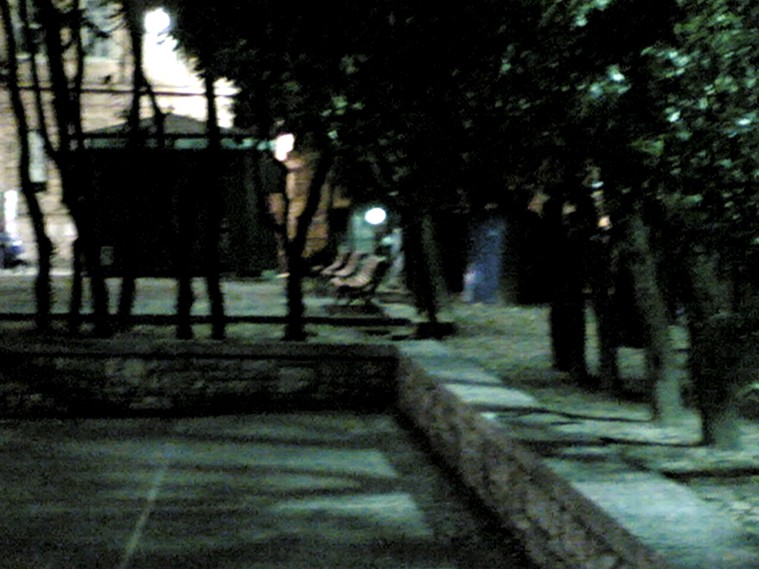
[Above and below: north side of Piazza Grimana showing the benches where Mr Curatolo normally sits]
Click here for Andrea Vogt’s report for the Seattle PI from the appeals court.
One of the case’s most colorful and controversial characters, Curatolo, 53, has spent many a day sitting in the small public Piazza Grimana square near the university where college students come to play basketball, buy hashish and hang out….
When questioned by prosecutors, he said he remembered seeing Knox and Sollecito having “an animated discussion” in the square, which overlooks the villa where Kercher’s body would be found the next day. It was not raining that night, he said, when asked about the weather. The following day the Carabinieri came around to ask him if he had seen anything, he recalled, and he had watched as forensic crime scene investigators worked around the house.
“Are you sure that the day after you saw those two discussing in an animated way you were questioned by the Carabinieri and saw the police at Via della Pergola in their white suits?” asked Mignini.
“Very sure,” Curatolo said. “As sure as I am that I am sitting here.”
But minutes later, in questioning by Sollecito’s lawyer Giulia Bongiorno, Curatolo also said he had seen young people in masks and getting on buses to go to the discos. The distinction is important because Halloween was Oct. 31 and there were likely students in costumes, getting on shuttles to go to the discos on the outskirts of town.
Kercher, however, was killed on the evening of Nov. 1, 2007, which is All Saints Day, a somber holiday in Italy, when it is less likely there were any festivities.
“I think it is clear that he does not have a lucid memory,” said a member of Knox’s legal team, Maria del Grosso, after the hearing. “And I think it was demonstrated today that he is not a credible witness.”
However, prosecutors and the lawyer for the Kercher family, Francesco Maresca, maintained the testimony was in line with previous statements.
“He repeated exactly what he said during the first trial. We still believe he is reliable.”
Good neutral report, as you’d expect, from Andrea Vogt who is the American reporter most consistently in the courtroom. All the other reports in English seemed to include a lot of fluff from the defenses.
We’ll have an analysis post on this hearing and the DNA testing in Rome later today or tomorrow.
**********
Below: Mr Curatolo’s preferred benches are at the far left there. If Sollecito did watch the gate of the house on the night he’d need to be to the far right there. The gate can easily be seen from there.
Tuesday, February 22, 2011
Open Questions: An Experienced Trial Lawyer Recommends How To Zero In On the Truth
Posted by SomeAlibi
Welcome
If you’ve come to this website because of the Lifetime movie of Meredith Kercher and Amanda Knox, then welcome.
Like all of us who come to this case, you have one key question: did they do it? The movie you’ve just watched is equivocal on that matter and perhaps didn’t help you at all.
On the internet, you will find people who are passionate in their defence of Amanda Knox and Raffaele Sollecito and you will find people who are passionate in their support of the prosecution.
My own arrival
Placing my own cards on the table here: as a twenty-plus year practising trial lawyer, I am firmly a part of that latter camp. But it wasn’t always that way.
It was information ““ evidence ““ that changed my views. What became very clear to me, early on, was that very few people in the English-speaking world are aware of anywhere near all of the evidence in this case.
I had thought I had grasped the core of the case, but I did not. The case is deep and complex and like many criminal cases, the complete facts behind it have been only sketchily reported in the media. The movie you may have just watched only skirts the real reasons the jury convicted.
The unanimous jury
I am sure that we all agree that no jury, in any murder case, given the awesome responsibility of adjudicating on (young) people’s lives for a multi-decade period of imprisonment, condemns people lightly.
It should be a matter of logic that the evidence presented against the accused must have been deep and satisfied the 6 lay jurors and 2 judges on the case for them to pronounce that huge judgement. That doesn’t mean that there couldn’t be the possibility of a mistrial, but clearly the evidence presented must have been substantial.
In this, we’ve already hit the first problem. Some supporters of Amanda Knox and Raffaele Sollecito will tell you there’s no evidence against them.
This is patently silly. No jury ever convicts people and sends them to prison for 24 plus years without being quite convinced of the case against them. Miscarriages of justice do happen, but the idea that there is “no evidence” can be summarily dismissed.
The only question is whether the evidence is sufficient, true and accurate.
The voluminous evidence
So is the evidence enough to convict beyond a reasonable doubt? The six lay jurors and two professional judges thought so, clearly. What you realise, when you come to the facts of the case, is that the evidence is based not around a single key event but on multiple points.
It can be astonishing to realise that the case is based not only on DNA evidence but also on cellphone evidence and computer records and further yet on multiple conflicting and contradicting versions of what happened that night from the mouths of the accused, not to mention falsely accusing an innocent man of responsibility for murder causing his incarceration.
The wealth of evidence is actually extremely unusual. It goes way beyond the quite similar Scott Peterson case.
The Massei Sentencing Report
What is absolutely new to the English speaking legal world is that the reasoning for the conviction can be read in an extremely detailed 440+ page report online. Bilingual posters at the Perugia Murder File Forum many of whom who are also key posters at TJMK translated the entire document into English over several months last year.
It was my privilege to play an extremely small part in that work. People from four different continents with backgrounds in forensic science, law, academia and a host of other disciplines participated.
You can read an effective executive summary by clicking on the Massei Report link at top here and reading the conclusions from page 388 onwards:
The Knox PR campaign
If you are new to this case, you will likely be shocked how much evidence there is against the convicted parties. Amanda Knox’s family have spent over $1m and involved a professional PR agency called Gogerty Marriot to suggest otherwise in the English-speaking media.
You might wonder why an innocent person needs a million dollar PR campaign on their part. Make yourself a coffee and read the conclusions of the judge’s report. It will take you about 15 minutes. Up until you read this report, almost everything you watch, hear and read is PR spin and is quite deliberately positioned to make you believe there is no case.
When you complete it, I believe you will have a very different take. That 15 minutes could change your ideas about everything you thought you knew about the murder of Meredith Kercher.
Now for a quick tour of the evidence.
Some of the points of evidence
Consider as you read it what is your own possible explanation for each of the following:
- the fact that the wound pattern and the reconstruction of the attack, each presented at trial in extensive closed-court sessions, showed this absolutely had to be a pack attack;
- the DNA of Raffaele Sollecito on Meredith’s bra-clasp in her locked bedroom;
- the almost-entire naked footprint of Raffaele on a bathmat that in *no way* fits that of the other male in this case - Rudy Guede;
- the fact that Raffaele’s own father blew their alibi that they were together in Raffaele’s flat at the time of the killing with indisputable telephone records;
- the DNA of Meredith Kercher on the knife in Raffaele’s flat which Raffaele himself sought to explain as having been from accidentally “pricking” Meredith’s hand in his written diary despite the fact Meredith had never been to his flat (confirmed by Amanda Knox);
- the correlation of where Meredith’s phones were found to the location of Raffaele Sollecito and Rudy Guedes’s flats;
- the computer records which show that no-one was at Raffaele’s computer during the time of the murder despite him claiming he was using that computer;
- Amanda’s DNA mixed with Meredith Kercher’s in five different places just feet from Meredith’s body;
- the utterly inexplicable computer records the morning after the murder starting at 5.32 am and including multiple file creations and interactions thereafter all during a time that Raffaele and Amanda insist they were asleep until 10.30am;
- the separate witnesses who testified on oath that Amanda and Raffaele were at the square 40 metres from the girls’ cottage on the evening of the murder and the fact that Amanda was seen at a convenience store at 7.45am the next morning, again while she said she was in bed;
- the accusation of a completely innocent man by Amanda Knox again and again when under no pressure which she insisted on putting in writing;
- the fact of Knox’s claim that she was aggressively interrogated for days, although she did not even have the status of a witness, and signed every page of every typed record of her mild, mundane and quite limited questionings;
- the fact that during Knox’s very unconvincing performance on the witness stand in July 2009 she admitted she was treated well and was not abused;
- the fact that when Amanda Knox rang Meredith’s mobile telephones, ostensibly to check on the “missing” Meredith, she did so for just three seconds - registering the call but making no effort to allow the phone to be answered in the real world
- the knife-fetish of Raffaele Sollecito, and his formal disciplinary punishment for watching animal porn at his university so far from the wholesome image portrayed;
- the fact that claimed multi-year kick-boxer Raffaele apparently couldn’t break down a flimsy door to Meredith’s room when he and Amanda were at the flat the morning after the murder but the first people in the flat with the police who weren’t martial artists could;
- the extensive hard drug use of Sollecito as told on by Amanda Knox;
- the fact that Amanda knew details of the body and the wounds despite not being in line of sight of the body when it was discovered;
- the lies of Knox on the witness stand in July 2009 about how their drug intake that night (“one joint”) is totally contradicted by Sollecito’s own contemporaneous diary;
- the fact that after a late evening’s questioning, Knox wrote a 2,900 word email home which painstakingly details what she said happened that evening and the morning after that looks *highly* like someone committing to memory, at 3.30 in the morning, an extensive alibi;
- the fact that both Amanda and Raffaele both said they would give up smoking dope for life in their prison diaries despite having apparently nothing to regret;
- the fact that when Rudy Guede was arrested, Raffaele Sollecito didn’t celebrate the “true” perpetrator being arrested (which surely would have seen him released) but worried in his diary that a man whom he said he didn’t know would “make up strange things” about him despite him just being one person in a city of over 160,000 people;
- the fact that both an occupant of the cottage and the police instantly recognised the cottage had not been burgled but had been the subject of a staged break-in where glass was *on top* of apparently disturbed clothes;
- the fact that Knox and Sollecito have feuded quite publicly ever since November 2007 and have shown far more anger toward one another than either has ever shown toward Guede;
- the fact that Knox and Sollecito both suggested each other might have committed the crime and Sollecito TO THIS DATE does not agree Knox stayed in his flat all the night in question;
- the fact of the bizarre behaviour of both of them for days after the crime;
- the fact that cellphone records show Knox did not stay in Sollecito’s flat but had left the flat at a time which is completely coincidental with Guede’s corroborated presence near the girl’s flat earlier in the evening;
- the fact that Amanda Knox’s table lamp was found in the locked room of Meredith Kercher in a position that suggested it had been used to examine for fine details of the murder scene in a clean up;
- the unbelievable series of changing stories made up by the defendants after their versions became challenged;
- Knox’s inexplicable reaction to being shown the knife drawer at the girl’s cottage where she ended up physically shaking and hitting her head despite being joyful earlier at the police station.
In conclusion
This list is not exhaustive. It goes”¦ on”¦ and on”¦ and on”¦ And yet, those supporting Knox will tell you that’s all made up, all coincidental.
Really? Does the weight of all that evidence sound made up to you?
If so, it must be the most over-rigged criminal case in the history of crime. Unlikely beyond all and any reasonable doubt.
The judge’s report explains why the jury found the defendants guilty. I truly expect you will be astonished at the amount of evidence if all you’ve done is watched a film or read a few press reports.
For any questions thereafter, please join us and post them on truejustice.org or perugiamuderfile.org . You’ll find here a host of good people who are all working on a totally volunteer basis in memory of the only victim of this crime.
Meredith Susanna Cara Kercher. RIP.
Tuesday, February 01, 2011
Explaining The Massei Report: A Visual Guide To The Faked Break-In Via Filomena’s Window
Posted by pat az
1. Post Overview
Cross-posted from my own website on Meredith’s case at the kind invitation of TJMK.
The Massei Report on the trial and sentencing of Amanda Knox and Raffaele Sollecito looks into whether or not a break-in is supported by the evidence available in the room with the broken window.
It concludes that the broken window and room in disarray - Filomena’s bedroom - are an “artificial representation”, ie. that the break-in was faked. After seven pages of review of the evidence, the Massei Report states:
“the situation of disorder in Romanelli’s room and the breaking of the window pane constitute an artificial representation created in order to orient the investigations towards a person who, not having the key to the front door, was supposed to have entered through the previously broken window and then effected the violent acts on Meredith which caused her death.
What follows is a look at the comments in the Massei report compared with crime scene and other photos. All quotes are from the English translation prepared by unpaid volunteers at PerugiaMurderFile.org. The section on the scenes in the bedroom begins on page 47 and continues to page 55. Some sentences in the paragraphs below have been omitted for brevity, and can be read in full in the original.
2. Knox Finds The Scene
Then (Amanda) went into another room and noticed that the window had been broken and that there was glass inside. She told these things to her and the other girls present. Then she related that she had gone back to Raffaele’s house and had rung Filomena.
I)n one of the telephone calls to Romanelli, Amanda spoke of that smashed window and of the possibility that someone could have entered the house through the broken place; she said this also in the telephone call to 112 and in the first declarations to the Postal Police.
Also in the e-mail of November 4, 2007, sent by Amanda to 25 people in the US, she hypothesises that a burglar could have entered the house and says she looked around to see if anything was missing.
Filomena Romanelli, disturbed by this phone call, had rung Amanda back without receiving a reply and when, a little later, she had succeeded in speaking to Amanda, Amanda had told her that in her room (i.e., in Ms. Romanelli’s room) the windowpane was broken, everything was in a mess, and that she should come back home.
Filomena Romanelli had ascertained from a quick check of her room, even though (it was) in a complete mess with the windowpane broken, that nothing was missing.
It must be held that when Filomena Romanelli left the house in via della Pergola, she had pulled the [interior] shutters towards the interior of her room, although she did not think that she had actually closed them; furthermore, because they were old and the wood had swelled a bit, they rubbed on the windowsill; to pull them towards the room it was necessary to use some force (“they rubbed on the windowsill”); but in this way, once they had been pulled in, as Romanelli remembered doing, they remained well closed by the pressure of the swelled wood against the windowsill.
It cannot be assumed - as the Defence Consultant did - that the [interior] shutters were left completely open, since this contradicts the declarations of Romanelli, which appear to be detailed and entirely likely, considering that she was actually leaving for the holiday and had some things of value in her room; already she did not feel quite safe because window-frames were in wood without any grille.
Also, the circumstance of the [interior] shutters being wide open does not correspond to their position when they were found and described by witnesses on November 2, and photographed (cf. photo 11 already mentioned).
Now, for a rock to have been able to break the glass of the window without shattering the outside shutters, it would have been necessary to remove the obstacle of the shutters by opening them up.
Consequently, since the shutters had been pulled together and their rubbing put pressure on the windowsill on which they rested, it would have first been necessary to effect an operation with the specific goal of completely opening these shutters.
The failure to find any instrument suitable for making such an opening (one cannot even see what type of instrument could be used to this end) leads one to assume that the wall would have to have been scaled a first time in order to effect the complete opening of the shutters, in order to enable the burglar to aim at the window and smash it by throwing a large stone - the one found in Romanelli’s room.
He would then have to have returned underneath Romanelli’s window for the second climb, and through the broken glass, open the window (balanced on his knees or feet on the outside part of the windowsill), otherwise he would not have been able to pass his arm through the hole in the glass made by the stone) and reach up to the latch that fastened the window casements, necessarily latched since otherwise, if the casements had not been latched, it would not have been necessary to throw a rock at all, but just to open the shutters and climb inside.
The “climber” would also need to rely on the fact that the [interior] shutters were not actually latched, and also that the “scuri” ]blackout blind] had not been fastened to the window-frame to which the broken pane was attached; otherwise it would not have been possible to open them from the outside; nor would it have been possible, even breaking the glass, to make a hole giving access to the house, since if these inner panels had been closed, they would have continued to provide an adequate obstacle to the possibility of opening the window, in spite of the broken pane.
This scenario appears totally unlikely, given the effort involved (going twice underneath the window, going up to throw the stone, scaling the wall twice) and taking into account the uncertainty of success (having to count on the two favourable circumstances indicated above), with a repetition of movements and behaviours, all of which could easily be seen by anyone who happened to be passing by on the street or actually coming into the house.
But beyond these considerations, there are other elements which tend to exclude the possibility that a burglar could have entered the house through the window of Romanelli’s room.The double climb necessary to attain the height of three and a half metres would have left some kind of trace or imprint on the wall, especially on the points on the wall that the “climber” would have used to support his feet, all the more as both the witnesses Romanelli and Marco Zaroli gave statements indicating that the earth, on that early November evening, must have been very wet (..6) (p50)
In fact, there are no visible signs on the wall, and furthermore, it can be observed that the nail ““ this was noted by this Court of Assizes during the inspection ““ remained where it was: it seems very unlikely that the climber, given the position of that nail and its characteristics, visible in the photo 11, did not somehow “encounter” that nail and force it, inadvertently or by using it as a foothold, causing it to fall or at least bend it. (p50)
The next fact to consider is that the pieces of glass from the broken pane were distributed in a homogeneous manner on the inside and outside parts of the windowsill, without any displacement being noted or any piece of glass being found on the ground underneath the window.
This circumstance, as confirmed also by the consultant Pasquali, tends to exclude the possibility that the rock was thrown from outside the house to create access to the house through the window after the breaking of the pane. The climber, in leaning his hands and then his feet or knees on the windowsill, would have caused at least some piece of glass to fall, or at least would have been obliged to shift some pieces of glass in order to avoid being wounded by them.
Instead, no piece of glass was found under the window, and no sign of any wound was seen on the pieces of glass found in Romanelli’s room. It can moreover be observed that the presence of many pieces of glass on the outside part of the windowsill increases the probability of finding some small pieces of glass on the ground underneath, since there seems to be no reason that so many pieces of glass would all stop just at the edge of the windowsill without any of them flying beyond the edge and falling down to the garden below. (p51 & 52)
On this subject it is also useful to recall that at the hearing of April 23, 2009, the witness Gioia Brocci mentioned above declared that she had observed the exterior of the house, paying particular attention to the wall underneath the window with the broken pane, the window of the room then occupied by Filomena Romanelli.
She said: “We observed both the wall”¦underneath the window and all of the vegetation underneath the window, and we noted that there were no traces on the wall, no traces of earth, of grass, nothing, no streaks, nothing at all, and none [39] of the vegetation underneath the window appeared to have been trampled; nothing” (p. 142 declarations of Gioia Brocci). (51)
This situation, like all the other glaring inconsistencies, is adequately and satisfactorily explained if one supposes that the rock was thrown from the inside of the room, with the two shutters pulled inwards so that they blocked the pieces of glass from falling to the ground below. Once the glass had been broken from inside, the rock was set down at some place in the room, and the shutters were pushed towards the outside, being thus opened from within the room. (p51)
But the fact that all this was in fact just a simulation, a staging, can be deduced from further circumstances. From the photos taken by the personnel of the Questura (photos 47 to 54 and 65 to 66) one can perceive an activity which appears to have been performed with the goal of creating a situation of obvious disorder in Romanelli’s room, but does not appear to be the result of actual ransacking, true searching for the kind of valuable objects that might tempt a burglar.
The drawers of the little dresser next to the bed were not even opened (photo 51 and declarations of Battistelli who noted that Romanelli was the one who opened the drawers, having found them closed and with no sign of having been rifled: see p. 66 of Battistelli’s declarations, hearing of Feb. 6, 2009).
The objects on the shelves in photo 52 appear not to have been touched at all; piles of clothes seem to have been thrown down from the closet (photo 54) but it does not seem that there was any serious search in the closet, in which some clothes and some boxes remained in place without showing any signs of an actual search for valuable items that might have been there (photo 54).
It does not appear that the boxes on the table were opened (photo 65) in a search for valuable items. And indeed, no valuable item (cf. declarations of Romanelli) was taken, or even set aside to be taken, by the ““ at this point we can say phantom ““ burglar.
What has been explained up to now thus leads to the assertion that the situation of disorder in Romanelli’s room and the breaking of the window pane constitute an artificial representation created in order to orient the investigations towards a person who, not having the key to the front door, was supposed to have entered through the previously broken window and then effected the violent acts on Meredith which caused her death.
Footnotes
(...1) The Massei Report in English is readable and downloadable via the link at the top of this page.
(..2) The consultant for the defence actually assumed that this had been done; in his exhibit, he assumed that the shutters were not present in front of the window
(..3): “if the shutters were closed, he could not have passed through, that is obvious”, cf. declarations of the consultant for the defence, Sergeant Francesco Pasquali, p. 22 hearing July 3, 2009.
(..4): (the window in Romanelli’s room is located at a height of more than three and a half metres from the ground underneath, cf. photo 11 from the relevant dossier)
(..5):,which are the wooden panels [scuri=non-louvered shutters in interior of room] that usually constitute the outer side (or the inner, depending on the point of view) of the window [attached to the outer edge of the inner side of the window-frame]
Friday, December 03, 2010
Explaining The Massei Report: Establishing The Time When Meredith Passed On
Posted by Storm Roberts
Why This Matters So Much
Perhaps the hardest parts of the Massei Report for compassionate readers to take are those concerning Meredith’s wounds and time of death.
Those passages commence early in the report and, as with our translation of much of the Micheli report, left our translators and many readers disturbed and a few of them at least in tears.
This is an abbreviated overview of how forensic medicine helped the court to establish the time of Meredith’s death.
Please click here for more
Monday, November 29, 2010
Explaining The Massei Report: The Timeline For Events Before, During, And After The Night #1
Posted by catnip
The Masssei Timeline To Midnight 1 Nov
These two posts list all of the events precisely timed in the Massei Report. Page numbers shown in brackets are those in the original Italian version.
This timeline will be reposted over on the TJMK Massei Report summaries and highlights page as we populate that page further starting this week.
There are plenty of mentions of imprecise occasions and general time periods, such as when Rudy told Giorgio Cocciaretto about liking Amanda (p26) or when lawyer Palazzoli found out their stolen computer had been recovered in Milan (p33), but they are not listed here.
nts_before_during_2/”>Post #2
Please click here for more
Explaining The Massei Report: The Timeline For Events Before, During, And After The Night #2
Posted by catnip
The Masssei Timeline After Midnight 1 Nov
We continue here from Post #1 These two posts list all of the events precisely timed in the Massei Report. Page numbers shown in brackets are those in the original Italian version.
There are plenty of mentions of imprecise occasions and general time periods, such as when Rudy told Giorgio Cocciaretto about liking Amanda (p26) or when lawyer Palazzoli found out their stolen computer had been recovered in Milan (p33), but they are not listed here.
Please click here for more
Monday, November 22, 2010
Explaining The Massei Report: Motive In The Meredith Kercher Case And Its Addressing In The Report DRAFT
Posted by James Raper
superceded by revised post 12 april 2011
I have read the Massei Report which in the main I thought was excellent. He was incisive with his logic, particularly, though not exclusively, with regard to the staging of the break in and how that necessarily meant that Amanda was present at the scene when the murder was committed.
However, I thought that he was rather feeble in his coverage of the defendants’ motives as to the attack which led to this brutal murder. Perhaps he thought it better to stick with the indisputable evidence.
Since this pointed to a sex attack, he surmised that Guede had a go at Meredith first, and then - because the stimulation was too much for them - he was joined by Amanda and Raffaele. This works but does seem a bit weak. There were, to my mind, undoubtedly other factors at work, and it is these which I wish to address.
For instance, Massei asks, though he says we can not know, had Amanda egged Guede on as to the “availability” (my word, not his) of Meredith during or prior to their presence at the cottage?
Frankly the answer to that has to be “yes” since it is a bit difficult to figure out why Amanda and Raffaele would otherwise wish Guede to join them at the cottage. I doubt that Amanda and Raffaele would have wanted Guede around if they were just going there to have an innocent cuddle and sex and to smoke cannabis, as Massei implies.
The evidence is that Raffaele hardly knew Guede and in the presence of Amanda was very possessive about her. If he had known of Guede’s interest in Amanda he would have been even less keen to have Guede around.
Also, if all was so innocent beforehand, then why would Guede have tried it on with Meredith and then pressed the situation in the face of her refusal to co-operate, knowing that there were two others there who could have come to her assistance?
The answer is of course that Guede knew full well in advance that there would be no problem with Amanda and Raffaele. He had been invited there and primed to act precisely in the way he did, at least initially. Why? Well there is plenty of evidence as to why Amanda, in her mind, may have been looking for payback time on Meredith. Come to that later.
What does not get much attention in the Massei Report, other than a terse Not Guilty at the end, is the matter of Meredith’s missing rent money and credit cards and whether Amanda and Raffaele stole them.
It is as if the Judge (well, the jury really) felt that this was a trivial issue that brought nothing much to the case and thus it was not necessary to give it much attention. And indeed there is no summation of or evaluation of that evidence.
Now that does surprise me. Of course there may have been some technical flaw with the charge and the evidence. But in the absence of any comment on this then we do not know what that may be. What I do know is that the matter, if proven, is not trivial.
A theft significantly ups the stakes for Amanda and Raffaelle just prior to the murder and produces a dynamic, which, threaded together with a sexual assault, makes for a far more compelling scenario to murder.
It also leads one to conclude that there was a greater degree of premeditation involved : not premeditation to murder but as to an assault, rather than the more spontaneous ” let’s get involved” at the time of the sex attack as postulated by Massei. An Italian lawyer could tell us whether this would have added extra time on to their sentence. It is worthy of consideration.
What is the evidence? What evidence was before the court? I do not have access to trial records, only what I have read about the case in the book “Darkness Descending” and on the True Justice for Meredith website. Therefore I stand to be corrected if I misrepresent the evidence or if my interpretation of it does not met the test of logic.
There were two lay witnesses who were compelling in the trial. The first was Filomena Romanelli, the flatmate and trainee lawyer. If there was anyone who was going to ensure that the rent was paid on time, it would have been her.
She gave evidence that the rent being due very soon she asked Meredith about her contribution of 300 euros and was told by Meredith that all was OK because she had just withdrawn 200 euros from her bank. Filomena assumed from Meredith’s reply that the balance was already to hand.
Is there a problem with this evidence? Is it hearsay and thus inadmissible under Italian law?
Perhaps it is not enough by itself because of course had Meredith not in fact withdrawn the money from her bank, or sufficient funds to cover the stated amount, then that would be a fatal blow to that part of the theft charge. Her bank manager was summoned to give evidence, essentially to corroborate or disprove Filomena’s testimony.
I do not know what exactly that evidence was. One would assume that at the very least it did not disprove her testimony. Had it done so that would, as I have said, been fatal. It is also unbelievable that Massei would have overlooked this in the Report. I am assuming that Meredith did not tell a white lie and that the bank records corroberate this.
There may of course be an issue of timing as I understand that the bank manager told the court that transactions at a cash machine are not necessarily entered on the customer account the same day . However that does not seem to me to be significant.
One must also think that the bank manager was asked what other cash withdrawals had been made if the credit cards were taken at the same time as the money. I understand that there is of course a caveat here: my assumptions in the absence of knowing exactly what the bank manager’s evidence was.
It would be useful also to know how and when the rent was normally paid. It sounds as if it was cash on the day the landlord came to collect.
We do know that the police did not find any money or Meredith”˜s credit cards. Had Meredith, a sensible girl, blown next month’s rent on a Halloween binge? Unlikely. So somebody stole it. Again, just as with the fake break in, when according to Amanda and Raffaele nothing was stolen, who and only who had access to the cottage to steal the money? Yes, you have guessed it. Amanda, of course.
Does the matter of missing rent money figure anywhere else? There is the evidence of Meredith’s phone records which show that she rang her bank late on the evening of her murder just prior to the arrival of Amanda, Raffaele and Guede.
Why did she do this? What do you think? What is the first thing you do when you discover that your credit cards are missing? Obviously have a good look round. Then you ring your bank to put a stop on them. It may have been that she was not actually able to do that at that time of night. But worthy of further investigation.
The missing money also figured in the separate trial of Guede. He made a statement which formed the whole basis of his defence. Basically this was that he had an appointment with Meredith at the cottage, had consensual foreplay with her and was on the toilet when he heard the doorbell ring etc, etc.
What he also added was that just before all this Meredith was upset because her rent money had disappeared and that they had both searched for it with particular attention to Amanda’s room. Now why does Guede mention this? Remember this is his defence. Alibi is not quite the right word. He had plenty of time to think about it or something better.
His defence was moulded around (apart from lies) (1) facts he knew the police would have ie no point denying that he was there or that he had sexual contact with Meredith : his biological traces had been left behind, and (2) facts known to him and not to the police at that stage ie the money, which he could use to make his statement as a whole more credible, whilst at the same time giving the police a lead. He is shifting the focus, if the police were to follow it up, on to the person he must have been blaming for his predicament, Amanda.
If all three, Amanda, Raffaele and Guede, went to the cottage together, as Massei has it, then Guede learns about the missing rent money not as referred to in his statement but because Meredith has already discovered the theft and worked out who has had it and challenges Amanda over it when the three arrive.
Perhaps this is when Guede goes to the toilet and listens to music on his Ipod. After all he is just there for the sex and this is all a distraction.
I expect, however, that Guede’s “evidence” was not a factor in the jury’s consideration. Neither Guede’s lawyers nor those for Amanda and Raffaele wanted Guede to testify at the trial, for obvious reasons Without Guede testifying his statement would have been objectionable if not inadmissable.
I would have thought, though, that the prosecution could have brought him in as a witness, with the agreement of the judge, to testify as to the missing rent money only. Guede and his lawyers might well have agreed to this on the basis that such limited questioning would not have incriminated him further and might well have had a beneficial effect in his appeal. Convicted criminals often give evidence in court. What weight is attached to the evidence of a convicted criminal is a matter for the jury.
As the prosecution have appealed Amanda’s and Raffaele’s sentences, asking for lengthier terms, could they produce Guede now? I don’t know.
When were the money and credit cards stolen? According to Amanda and Raffaele they spent Halloween together at Raffaele’s and the next day went to the cottage. Meredith was there. Meredith left at about 1pm to spend the evening with her friends and Amanda and Raffaele left at about 3pm.
This is according to Amanda and Raffaele of course but probably likely because if the money had already been stolen Meredith may likely have known with different consequences for everyone. So Amanda and Raffaele could have stolen the money and credit cards after she left - the day of her murder.
Incidentally Filomena testified that Meredith never locked the door to her room except on the occasions she went home to England. Meredith was a very trusting girl.
What motive had Amanda for wanting the money apart from the obvious one of profit? There are numerous plausible motives.
To fund a growing drugs habit which she shared with Raffaele? Not an inconsiderable expense for a student. Both Amanda and Raffaele explained their confusion and hesitancy as being due to the fact that they had been going rather hard on drugs.
To embarrass Meredith vis a vis her landlord and the other flatmates? Because Amanda’s own financial circumstances were deteriorating and to fund her own rent contribution? She was probably about to be sacked at Lumumba’s bar and to add insult to injury would likely be replaced by Meredith. In fact Meredith was well liked by all whereas Amanda’s star was definitely on the wane.
That must have irked Amanda. Filomena testified that Meredith and Amanda had begun to have issues with each other towards the end.
With Meredith’s money both Amanda and Raffaele could have afforded something a little stronger than the usual smoke and I speculate that they spent the late afternoon getting stoned. Did they use the credit cards? If they did then it was probably small cash withdrawals but the likelihood is that they did not as in the limited time prior to Meredith’s death they had the use of her ready cash, and after her death the safer thing was to destroy them.
Of course Amanda was still an employee of Lumumba and she would have to turn up that evening for work, but perhaps she no longer cared all that much about the consequences.
Again I speculate that she and Raffaele met Guede before she was due at work, discussed Meredith’s “availability” and Amanda, Raffaele and Guede agreed to meet up on the basketball court at Grimana Square between 11 and 11.30pm, by which time Amanda would expect to have got away from the Le Chic bar.
What else did Amanda and Raffaele have in mind when arranging the meeting or when thinking about it afterwards? Guede was of course thinking about sex and that Amanda and Raffaele were going to facilitate an encounter with Meredith later that evening.
However Amanda and Raffaele had something else on their minds. The logic of their position vis a vis Meredith cannot have escaped them. They had taken her money and credit cards whilst she was out. Had she not already discovered this fact then she would in any event be back, notice the money and credit cards were missing and would put 2 and 2 together.
Very probably Meredith had not already discovered the theft because, spending a quiet time with friends, she had no cause to use her credit cards. What would happen? Who would she tell? Would she call the police? How are they going to deal with this? Obviously deny it but logic has its way and the situation with or without the police being called in would be uncomfortable.
They decided to turn the tables and make staying in Perugia very uncomfortable for Meredith. Now the embarrassing, for Meredith, sexual advances from Guede were going to be manipulated by them in to a sexual humiliation for Meredith.
Meredith was not going to be seriously harmed but as and when they were challenged by Meredith over the missing money, as inevitably they would be, she was to be threatened with injury or worse. Knives come in useful here.
She would likely then give up her tenancy at the cottage, perhaps leave Italy. Whether that looks like the probable and likely outcome I leave you to judge, but just how much of this would be precise and careful planning given, as seems likely, that Amanda and Raffaele were going hard on the drugs?
They were not in a position to act any earlier than they did. They knew that Meredith was away with her friends and probably would not come home until much later. Amanda was expected at Lumumba’s. Guede was not available until the pre-arranged time.
In the event Amanda did not have to go to work. She and Raffaele were at a loose end until the time of their pre-arranged meeting with Guede. They got to the basketball court early. They had to wait for him. They could not ring him as he did not have a phone.
We know Amanda and Raffaele were on the basketball court (some of the time if not all of the time) between 9.30 and sometime just before 11.30pm. This is because of the evidence of a Mr Curatolo, the second compelling lay witness. He testified to seeing Amanda and Raffaele having heated arguments, and occasionally going to the parapet at the edge of the court to peer over.
What were they looking at? Go to the photographs of Perugia on the True Justice for Meredith website and you will see. From the parapet you get a good view of the gates that are the entrance, and the only entrance as I understand it, to the cottage.
So why the behaviour observed by Mr Curatolo? They may have been impatient waiting for Guede to arrive. Were they actually to go through with this? One might speculate that Raffaele was not actually as keen on it as Amanda.
Was Meredith at home, alone, and had she found the money was missing and had she called the police or tipped off someone already? Who was hanging around outside the entrance to the cottage and why?
There was, apparently, a car parked at the entrance, a broken down car nearby with the occupants inside awaiting a rescue truck, and the rescue truck itself, all present at different times. Amanda and Raffaele did not wish to be observed going through the gates with these potential witnesses around.
We, of course, cannot know for certain what went on in the minds of Amanda and Raffaele and account for much of their movements between the time of them leaving the cottage at, they say, 3pm and their departure from the basketball court at around 11.30pm. It has to be speculation but there is a logical consistency to the above narrative if they had stolen Meredith’s money and credit cards earlier that day, and their meeting up with Guede just before 11.30pm does not look like a co-incidence.
From there on in to the inevitable clash between Amanda and Meredith over the money and credit cards, the threats and intimidation by Amanda and Raffaele to scare her, the sexual assault as part of that, and the tragic death of Meredith.
In a civil case in this country, the standard of proof is “the balance of probabilities” rather than the higher standard of (to paraphrase) “beyond reasonable doubt” in a criminal case.
If my earlier caveat about the bank manager’s evidence not disproving that Meredith had withdrawn her money is unnecessary then, at the very least, on the balance of probabilities, it is proven that Meredith had that money, and the credit cards, and that Amanda and Raffaele had stolen them from her. Some might think (I do) that it is proven on the higher standard too.
It is a shame that the Massei court did not consider and evaluate all of the evidence before it.
It did not need to fear that by doing so it may have been including something which others might consider eminently appealable, since the evidence and reasoning on which it did convict Aamanda and Raffaele of murder was sound and impeccable.
Addendum : There have been a great many useful comments on this post. As a consequence I accept that the scenario outlined above requires at least two modifications and these are in my last comment below.

